Vera C. Rubin Observatory:
Ushering a New Era of TDA
Federica Bianco
University of Delaware
Department of Physics and Astronomy
Biden School of Public Policy and Administration
Data Science Institute
Rubin Legacy Survey of Space and Time
Construction Project Deputy Project Scientist
slides available at
This is a living land acknowledgement developed in consultation with tribal leadership of Poutaxet, what is now known as the “Delaware Bay,” including: the Lenape Indian Tribe of Delaware, the Nanticoke Indian Tribe, and the Nanticoke Lenni-Lenape Tribal Nation in 2021. We thank these leaders for their generosity.


The University of Delaware occupies lands vital to the web of life for Lenni Lenape and Nanticoke, who share their ancestry, history, and future in this region. UD has financially benefited from this regional occupation as well as from Indigenous territories that were expropriated through the United States land grant system. European colonizers and later the United States forced Nanticoke and Lenni Lenape westward and northward, where they formed nations in present-day Oklahoma, Wisconsin, and Ontario, Canada. Others never left their homelands or returned from exile when they could. We express our appreciation for ongoing Indigenous stewardship of the ecologies and traditions of this region. While the harms to Indigenous people and their homelands are beyond repair, we commit to building right relationships going forward by collaborating with tribal leadership on actionable institutional steps.



LSST Science Drivers
Probing Dark Energy and Dark Matter


LSST Science Drivers
Taking an inventory of the solar system
from threatening NEO to the distant Oort Cloud


image credit ESO-Gaia
LSST Science Drivers
Mapping the Milky Way (and Local Volume)
LSST Science Drivers
image credit: ESA-Justyn R. Maund
Exploring the Transients and Variable Universe
10M alerts every night shared with the world
60 seconds after observation
Nicole Oresme (artist unknown) Bibliothèque National de France
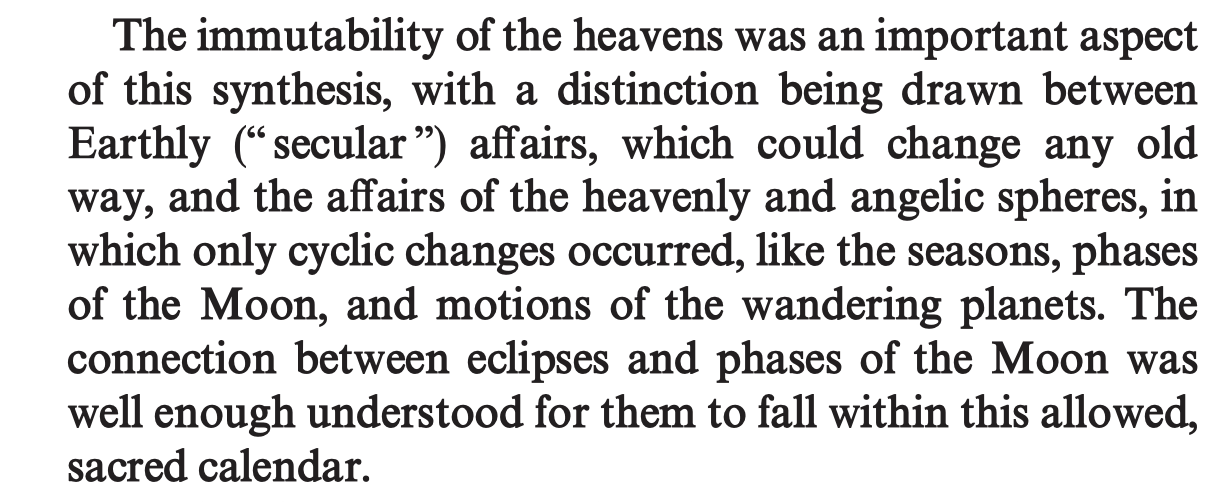



From Flammarion's Astronomie Populaire (1880): in Scania, Denmark

Workshop of Diebold Lauber unknown artist, ca.1450


circa 1900
cepheid



cepheid


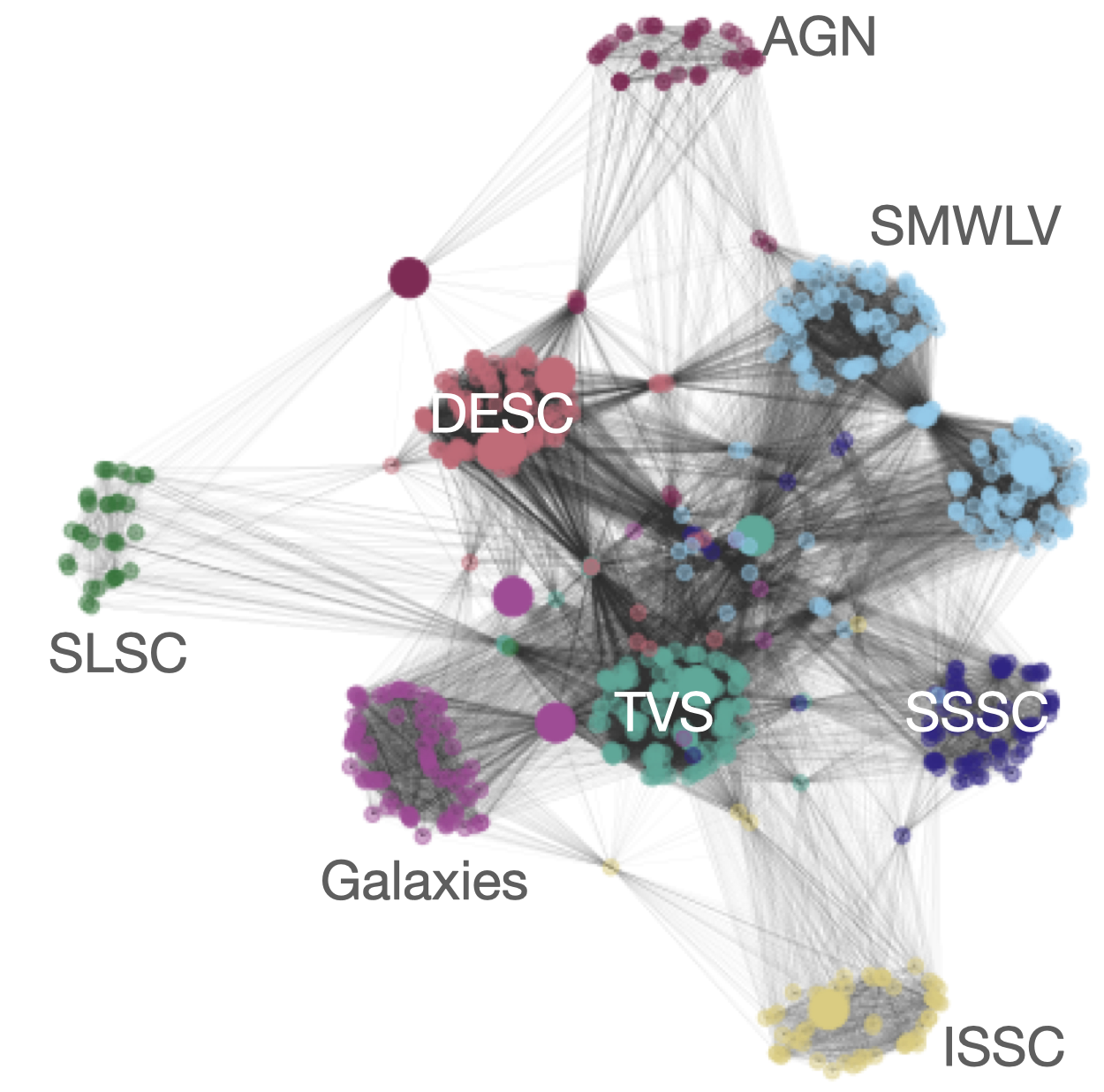
Rubin LSST Science Collaborations
federica bianco - fbianco@udel.edu

@fedhere
8 teams
>1500 members
>2000 affiliations
5 continents


Rubin LSST Science Collaborations
federica bianco - fbianco@udel.edu

@fedhere
Active Galactic Nuclei SC
Dark Energy SC
Informatics and Statistics SC
Galaxies SC
Strong Lensing SC
Stars Milky Way Local Volume SC
Solar System SC
Transients and Variable Stars SC
Rubin LSST Science Collaborations
federica bianco - fbianco@udel.edu

@fedhere
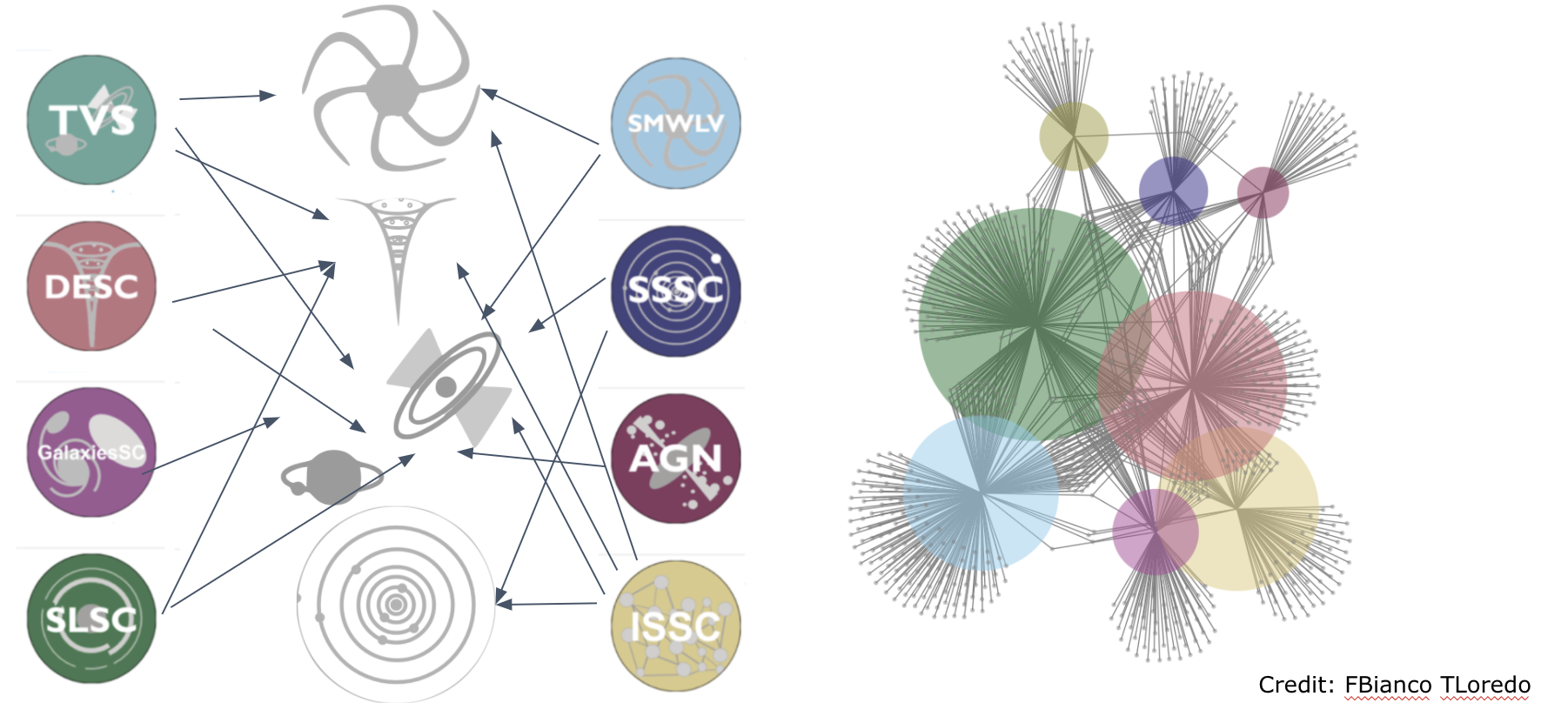
Dark Sector Cosmology


Rubin LSST Science Collaborations
federica bianco - fbianco@udel.edu

@fedhere

Dark Sector Cosmology
Milky Way



Rubin LSST Science Collaborations
federica bianco - fbianco@udel.edu

@fedhere

Dark Sector Cosmology
Milky Way
Solar System




Rubin LSST Science Collaborations
federica bianco - fbianco@udel.edu

@fedhere

Dark Sector Cosmology
Milky Way
Solar System
TDA





Rubin LSST Science Collaborations
federica bianco - fbianco@udel.edu

@fedhere
Dark Sector Cosmology
Milky Way
Solar System
TDA



LSST time domain data products
Data Products

federica bianco - fbianco@udel.edu

@fedhere
world public!

federica bianco - fbianco@udel.edu

@fedhere
world public!


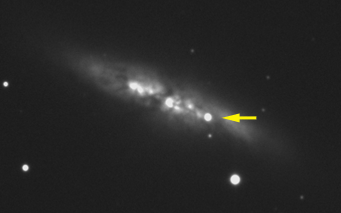
Rubin Observatory LSST
federica bianco - fbianco@udel.edu

@fedhere

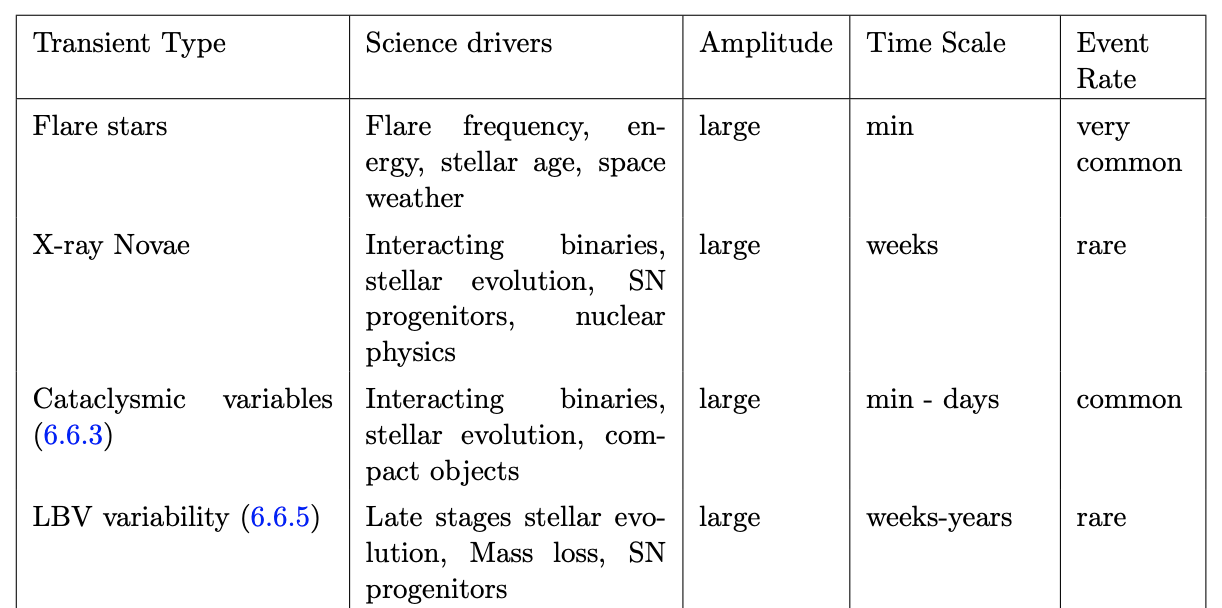





LSST Data Volume: a change of perspective
Rubin will see ~1000 SN every night!

A lot of them will be too faint to study with traditional means, particularly spectra.
Lots of emphasis in new analysis techniques that rely on "Big Data"
federica bianco fbianco@udel.edu


@fedhere

~1000 images per night
10M alerts per night (5sigma changes)
17B stars Ivezic+18
~10 million QSO Mary Loli+21
∼200 quadruply-lensed quasars Minghao+19
~50 kilonovae Setzer+19, Andreoni+19 (+ ToO)
~1000 SNe every night in the LSST sky
(10K/year) LSST SCs 2009
Rubin Transients by the number
Credit: Leanne Guy

~1000 images per night
10M alerts per night (5sigma changes)
17B stars Ivezic+18
~10 million QSO Mary Loli+21
∼200 quadruply-lensed quasars Minghao+19
~50 kilonovae Setzer+19, Andreoni+19 (+ ToO)
~1000 SNe every night in the LSST sky
(10K/year) LSST SCs 2009
Rubin Transients by the number

~1000 images per night
10M alerts per night (5sigma changes)
17B stars Ivezic+18
~10 million QSO Mary Loli+21
∼200 quadruply-lensed quasars Minghao+19
~50 kilonovae Setzer+19, Andreoni+19 (+ ToO)
~1000 SNe every night in the LSST sky
(10K/year) LSST SCs 2009
Rubin Transients by the number

~1000 images per night
10M alerts per night (5sigma changes)
17B stars Ivezic+18
~10 million QSO Mary Loli+21
∼200 quadruply-lensed quasars Minghao+19
~50 kilonovae Setzer+19, Andreoni+19 (+ ToO)
~1000 SNe every night in the LSST sky
(10K/year) LSST SCs 2009
Rubin Transients by the number

~1000 images per night
10M alerts per night (5sigma changes)
17B stars Ivezic+19
~10 million QSO Mary Loli+21
∼200 quadruply-lensed quasars Minghao+19
~50 kilonovae Setzer+19, Andreoni+19 (+ ToO)
~1000 SNe every night in the LSST sky
(10K/year) LSST SCs 2009
Rubin Transients by the number

~1000 images per night
10M alerts per night (5sigma changes)
17B stars Ivezic+19
~10 million QSO Mary Loli+21
∼200 quadruply-lensed quasars Minghao+19
~50 kilonovae Setzer+19, Andreoni+19 (+ ToO)
~10k SuperLuminous Supernovae Villar+ 2018
Rubin Transients by the number

~1000 images per night
10M alerts per night (5sigma changes)
17B stars Ivezic+19
~10 million QSO Mary Loli+21
∼200 quadruply-lensed quasars Minghao+19
~50 kilonovae Setzer+19, Andreoni+19 (+ ToO)
~10k SuperLuminous Supernovae Villar+ 2018
~ 50k Tidal Disruption Events Brickman+ 2020
Rubin Transients by the number

~1000 images per night
10M alerts per night (5sigma changes)
17B stars Ivezic+19
~10 million QSO Mary Loli+21
∼200 quadruply-lensed quasars Minghao+19
~50 kilonovae Setzer+19, Andreoni+19 (+ ToO)
~10k SuperLuminous Supernovae Villar+ 2018
~ 50k Tidal Disruption Events Brickman+ 2020
~1000 SNe every night in the LSST sky
Rubin Transients by the number

~1000 images per night
10M alerts per night (5sigma changes)
17B stars Ivezic+19
~10 million QSO Mary Loli+21
∼200 quadruply-lensed quasars Minghao+19
~50 kilonovae Setzer+19, Andreoni+19 (+ ToO)
~10k SuperLuminous Supernovae Villar+ 2018
~ 50k Tidal Disruption Events Brickman+ 2020
> 10 Interstellar Objects (aliens?)
Rubin Transients by the number

~1000 images per night
10M alerts per night (5sigma changes)
17B stars Ivezic+19
~10 million QSO Mary Loli+21
∼200 quadruply-lensed quasars Minghao+19
~50 kilonovae Setzer+19, Andreoni+19 (+ ToO)
~10k SuperLuminous Supernovae Villar+ 2018
~ 50k Tidal Disruption Events Brickman+ 2020
> 10 Interstellar Objects (aliens?)
~1000 SNe every night in the LSST sky
Rubin Transients by the number
Rubin Observatory LSST
federica bianco - fbianco@udel.edu

@fedhere
Rubin will see ~1000 SN every night!
A lot of them will be too faint to study with traditional means, particularly spectra.
Lots of emphasis in new analysis techniques that rely on "Big Data"
Rubin LSST = Astro + DataScience

federica bianco - fbianco@udel.edu

@fedhere
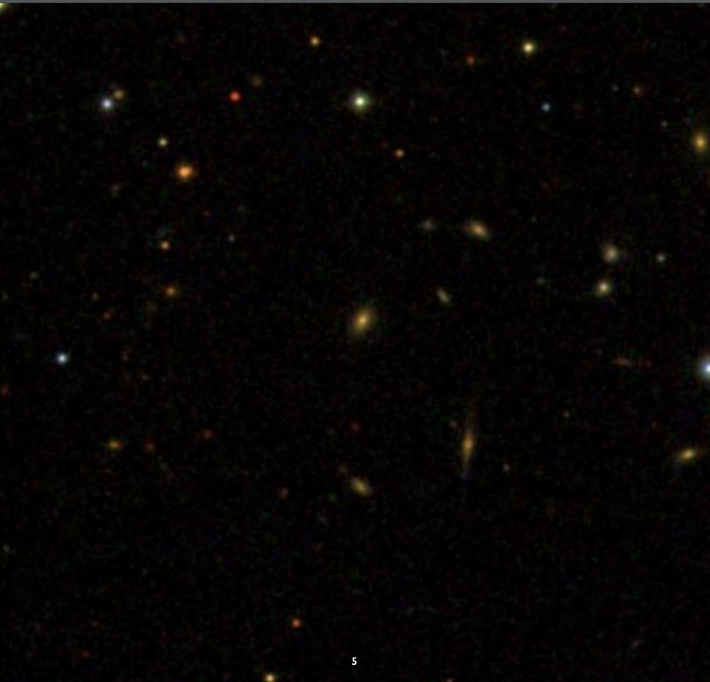
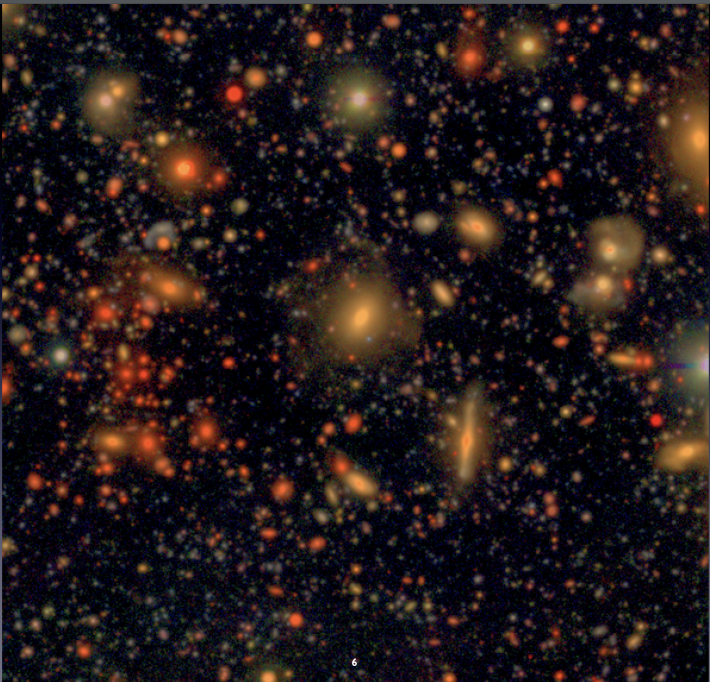
At this level of precision,everything is variable, everything is blended, everything is moving.
| u,g,r,i,z,y | |
|---|---|
| Photometric precision Photometric accuracy Astrometric precision Astrometric accuracy # visits Single image 5σ depths 10-year stack 5σ depth |
5 mmag 10 mmag 10 mas 50 mas 56, 80, 184, 184, 160, 160 23.9, 25.0, 24.7, 24.0, 23.3, 22.1 26.1, 27.4, 27.5, 26.8, 26.1, 24.9 |



LSST
number of SNe discovered in 5 years
federica bianco - fbianco@udel.edu

@fedhere
Rubin will see ~1000 SN every night!
Credit: Alex Gagliano University of Illinois

To this day, transient astronomy heavily relies on spectra
Superluminous Supernovae
today ~ 10/year
LSST: ≈10,000 SLSNe per year with >10 data points will be discovered in the Wide-Fast-Deep (WFD) survey at z ≲ 3.0, (Villar+ 2018)
Tidal Disruption Events
today ~10/year
35,000 and 80,000 over 10 years of observations (Brickman+ 2020)
KILONOVAE:
today ??
2-32 in similar to GW170817 to be recognizable as fast-evolving transients in the WFD (Andreoni+ 2021)
LSST has profoundly changed the TDA infrastructure
Photometric Classification
federica bianco - fbianco@udel.edu

@fedhere
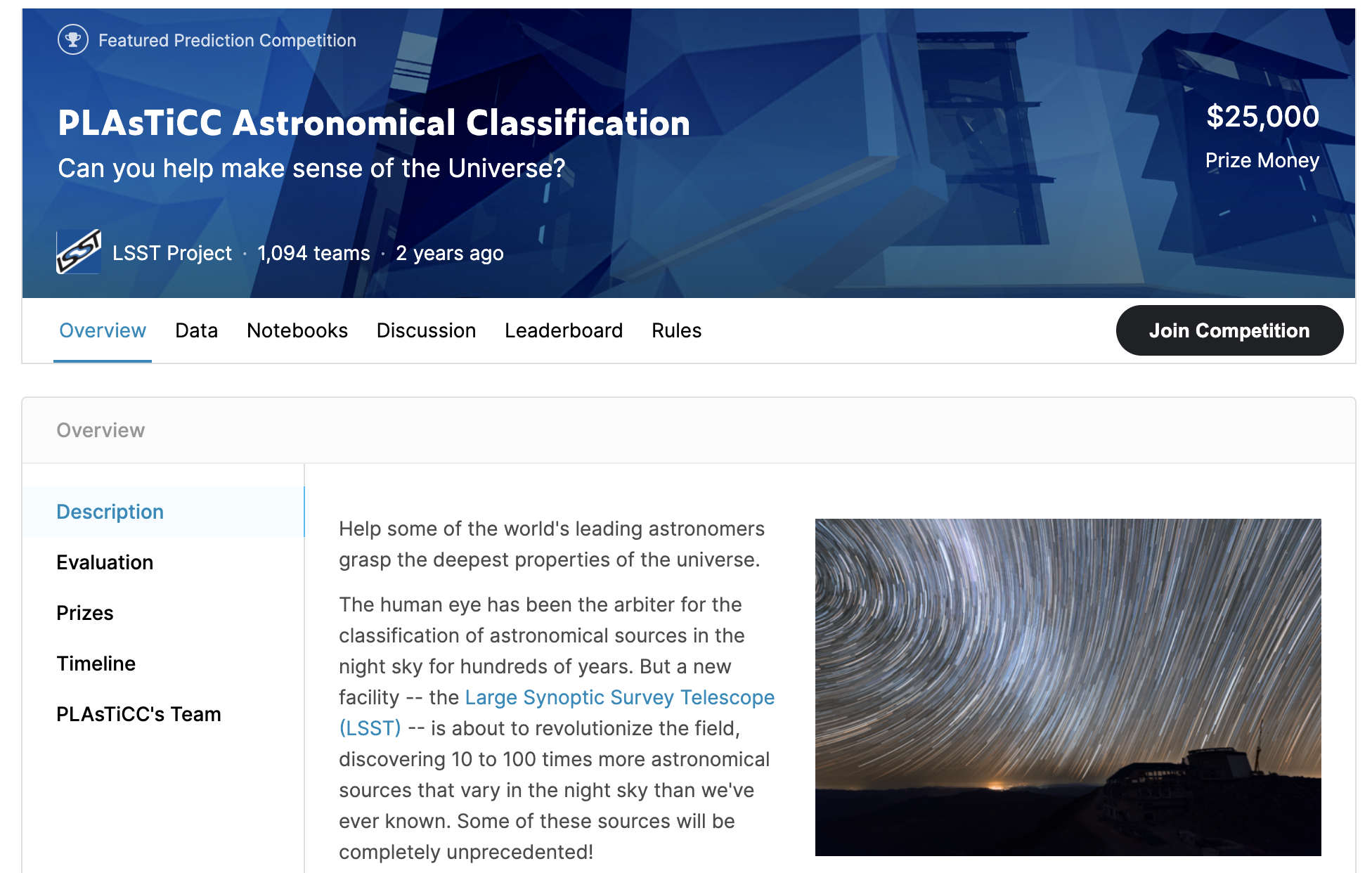
Dark Energy Science Collaboration
(DESC)
+
Transients and Variable
Science Collaboration
(TVS SC)


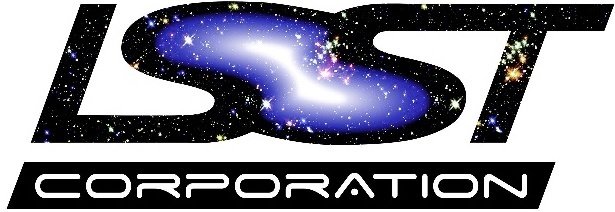



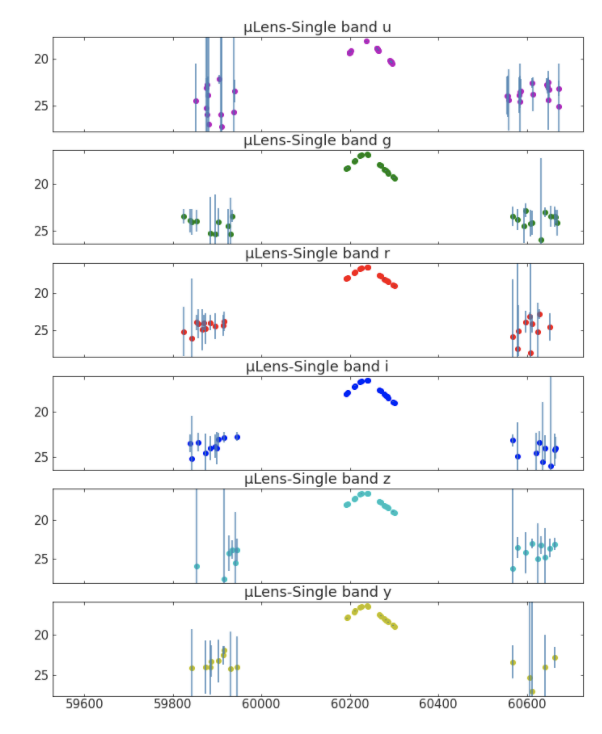

Deep Drilling Fields
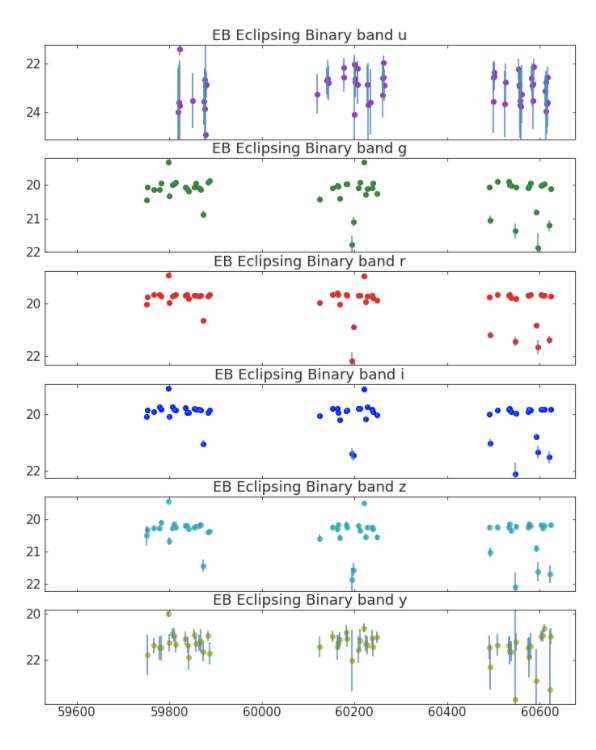




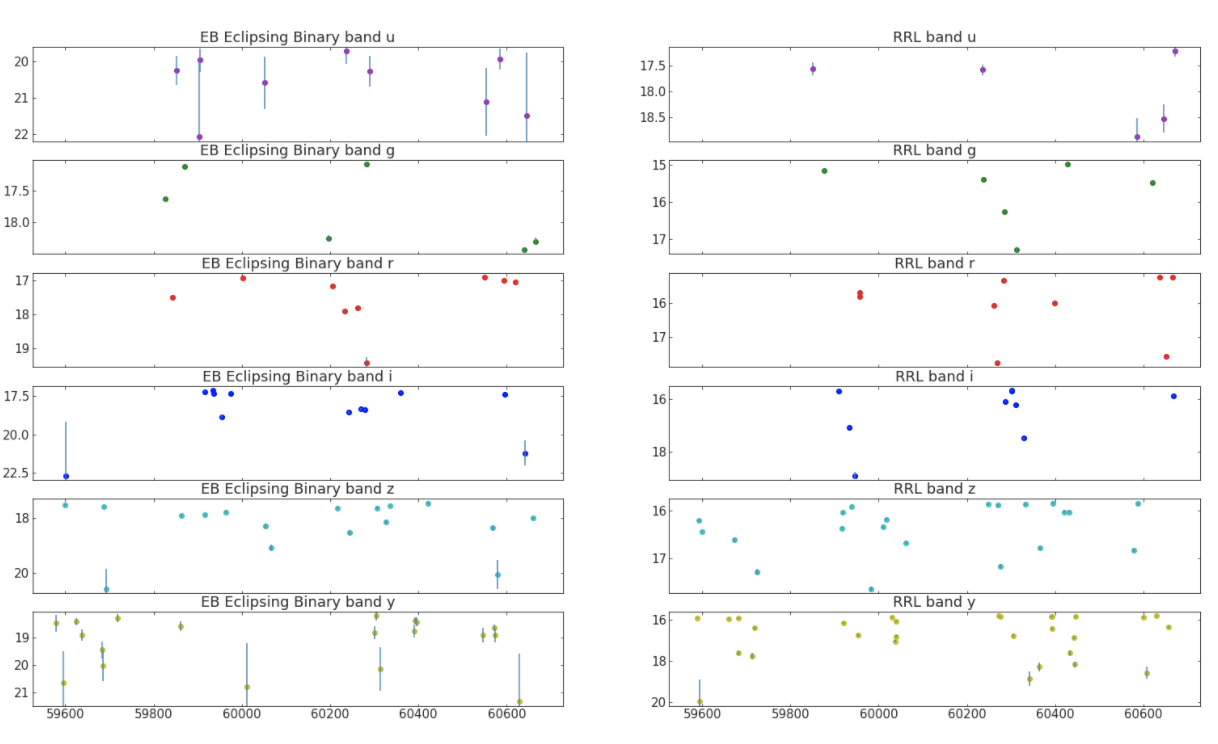
Deep Drilling Fields


Wide Fast Deep
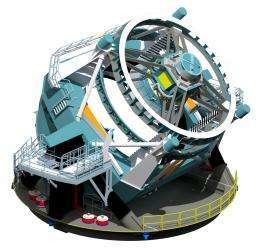
Discovery Engine
10M alerts/night

Community Brokers



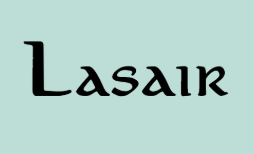
target observation managers



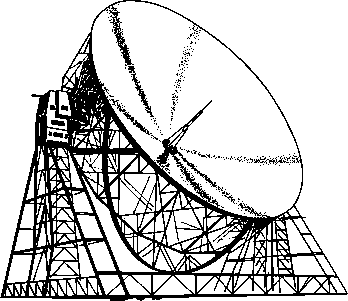


the astronomy discovery chain
federica bianco - fbianco@udel.edu
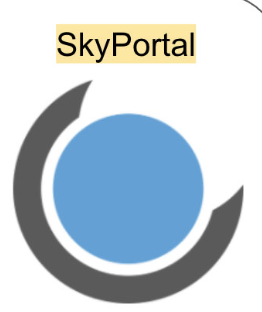


Pitt-Google
Broker
BABAMUL
LSST survey strategy optimization


Rubin LSST survey design
distributions of time gaps
in 76 LSST simulations (2018)
Rubin LSST survey design

Li et al. 2021
Rubin LSST survey design
Bianco et al. 2021
Because the Rubin LSST data is open to all US scientists and to a broader yet community worldwide, to truly make it a survey of and for and of the people, Rubin Observatory called the community to design its survey -
this is a uniquely "democratic" process!
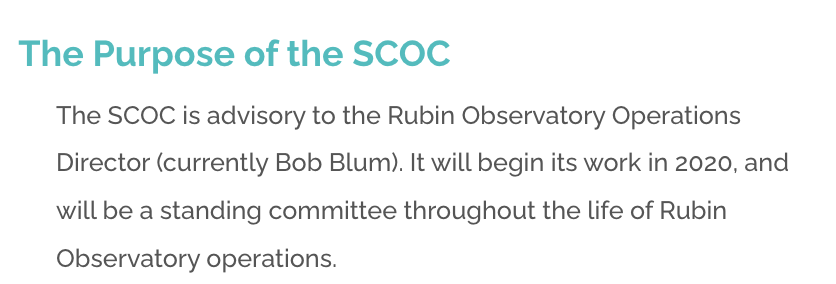
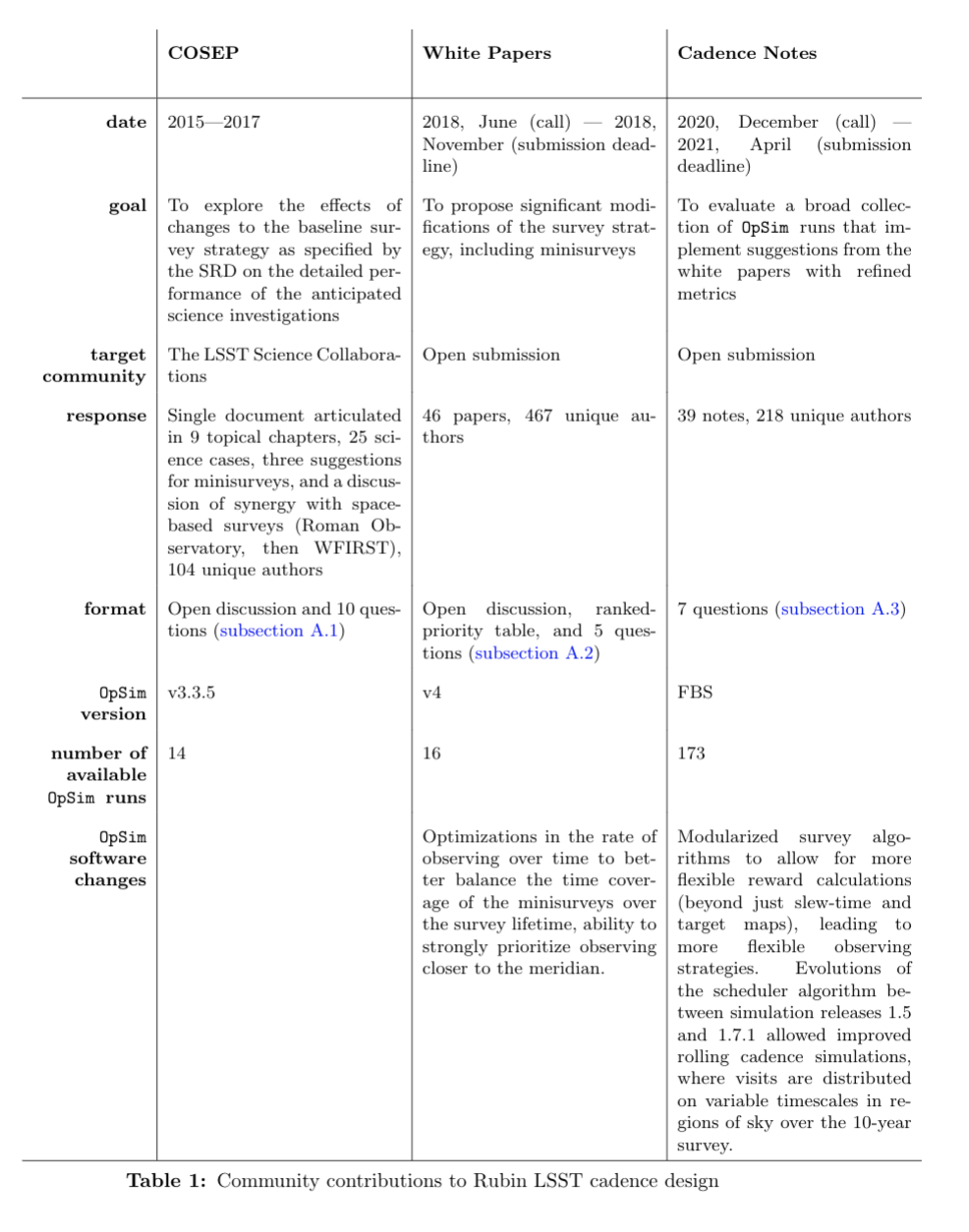
single document
9 chapters
25 science cases
14
46 papers
467 unique authors
16
39 notes
218 unique authors
173
date
response
available simulations
(OpSim)
2015-17
2018
2021
Rubin LSST survey design
2015-17
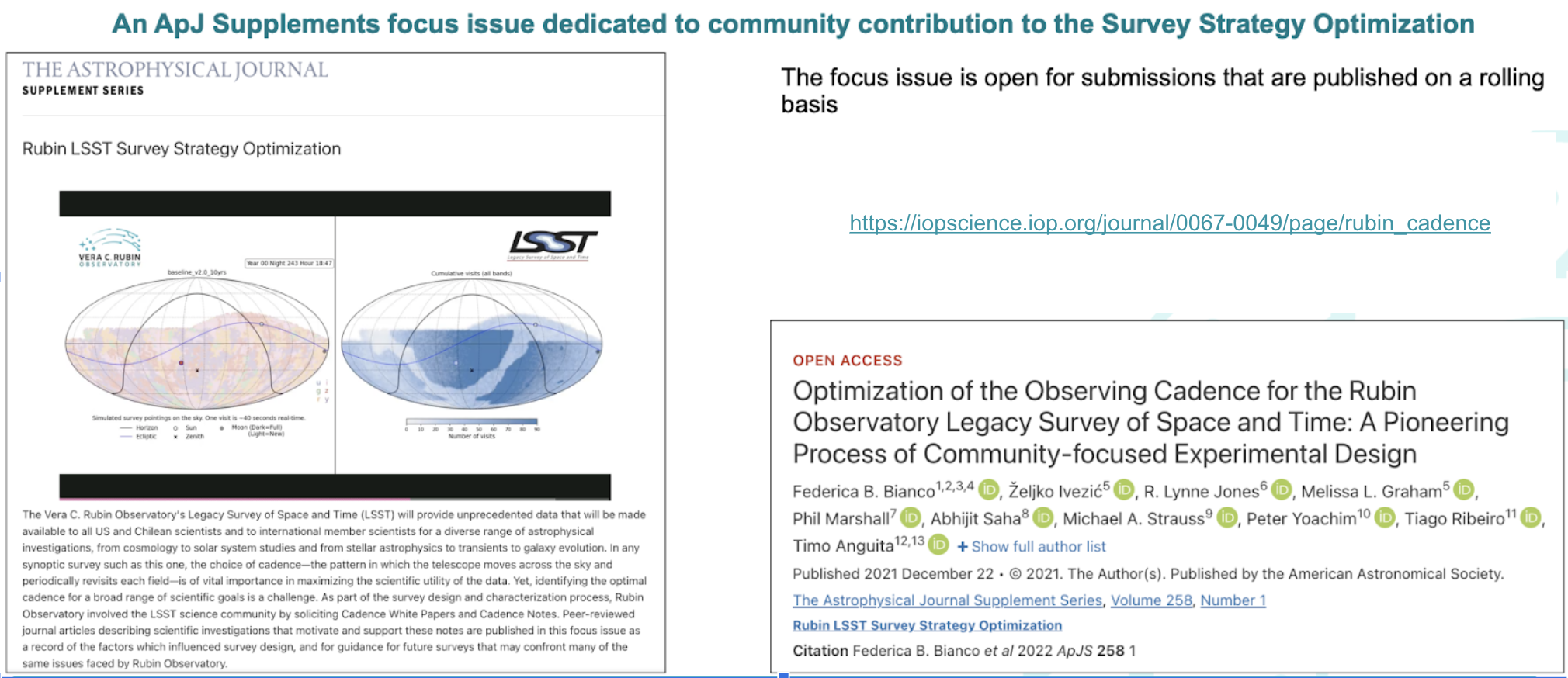
The call for cadence white papers generated an unprecedentedly collaborative process that lead to 46 white papers in 2018
Currently 12 have been turned into peer review work
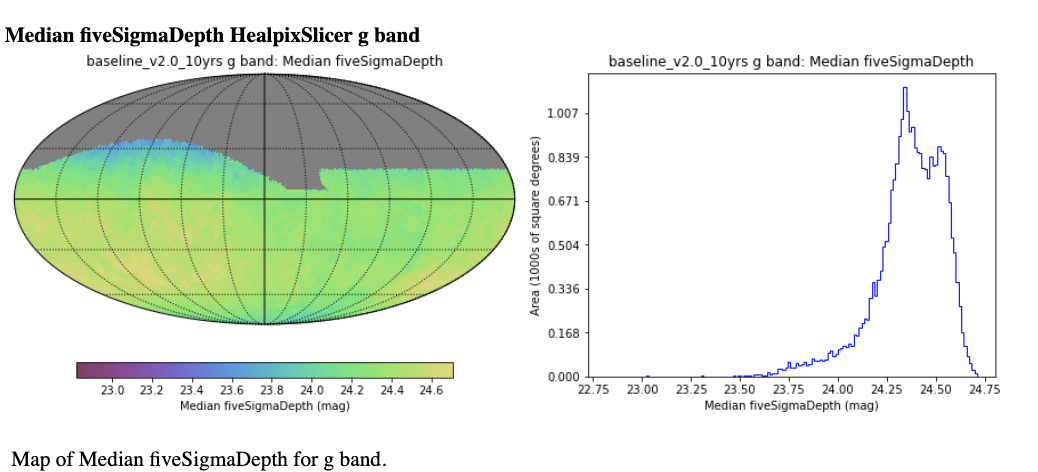
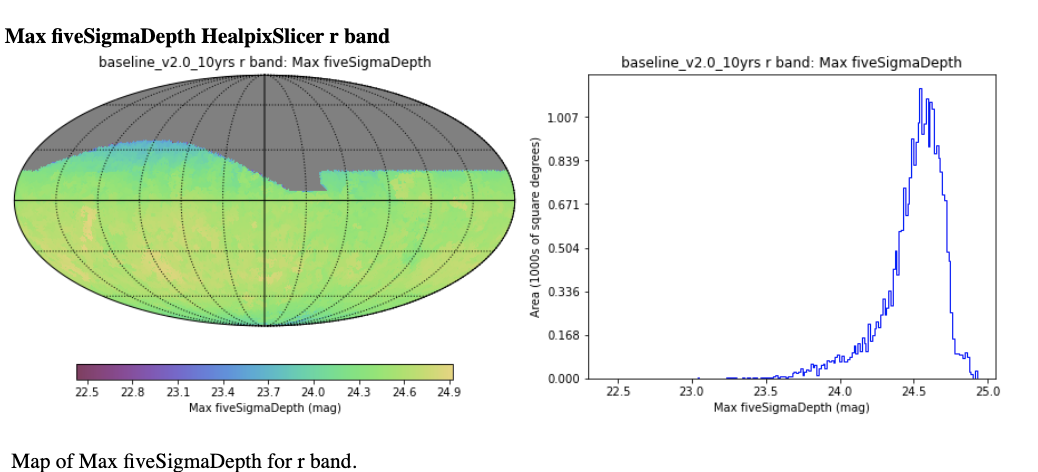

23
23.7
24.7
24.3
25
26.9
28.1
5σ depth
5σ depth
coadd 5σ depth
coadd 5σ depth
survey specifications
(current baseline)
g band
r band
source http://astro-lsst-01.astro.washington.edu:8080/?runId=2

27.1
23.3
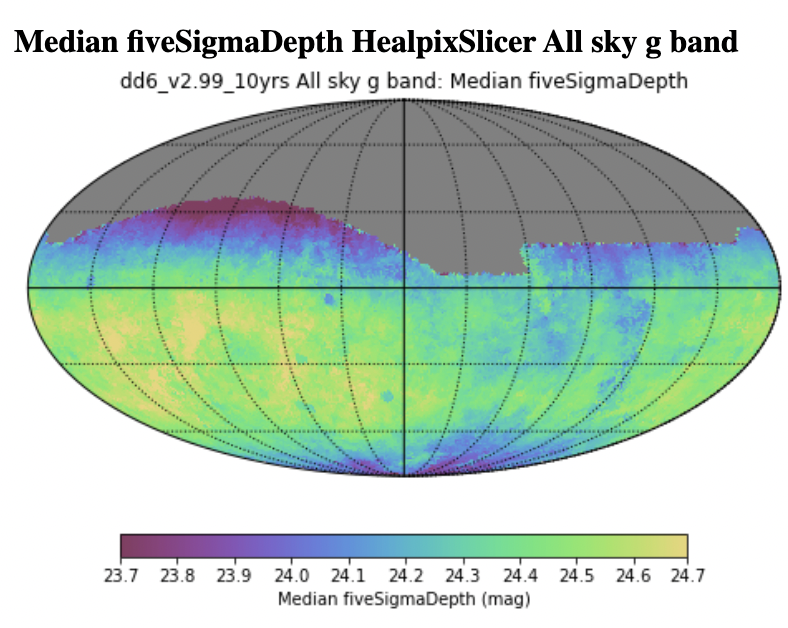
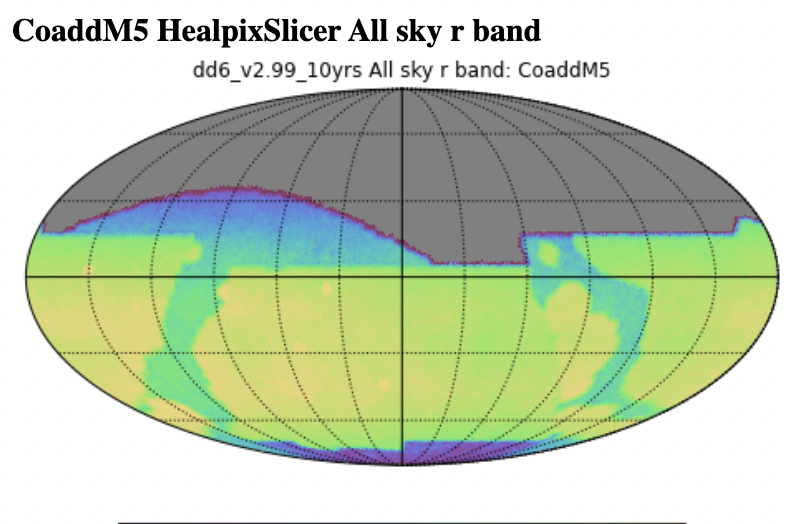
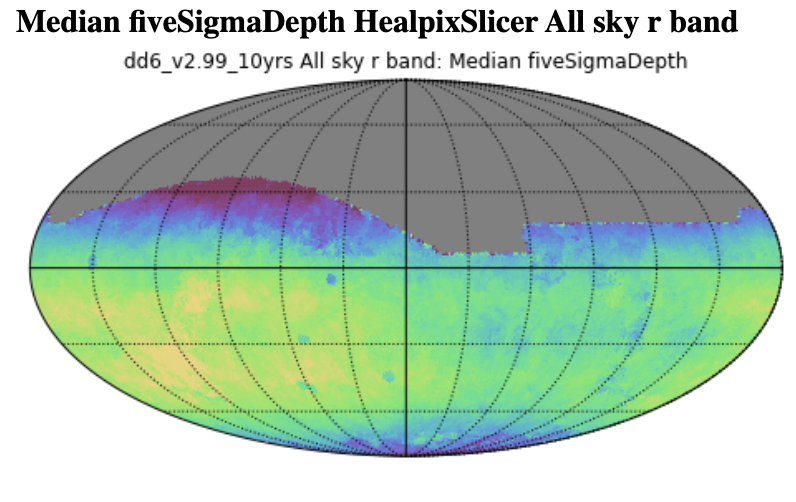
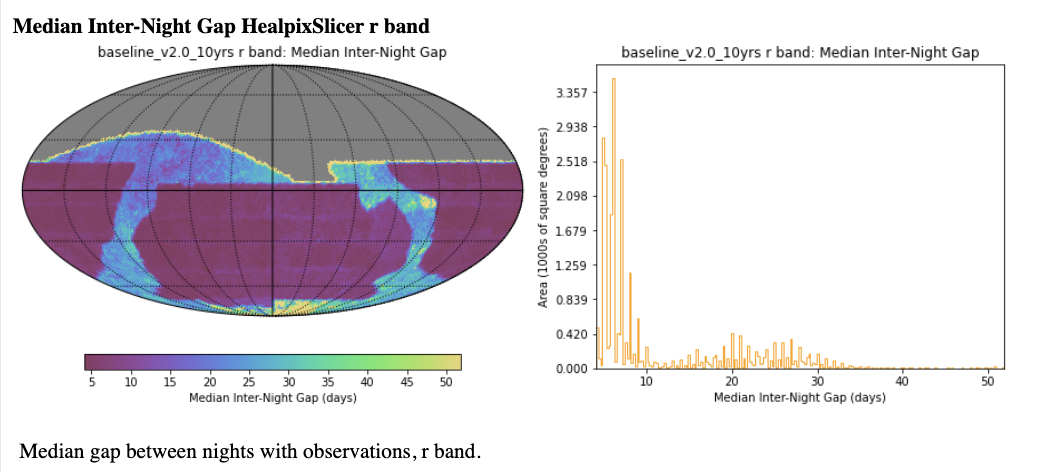
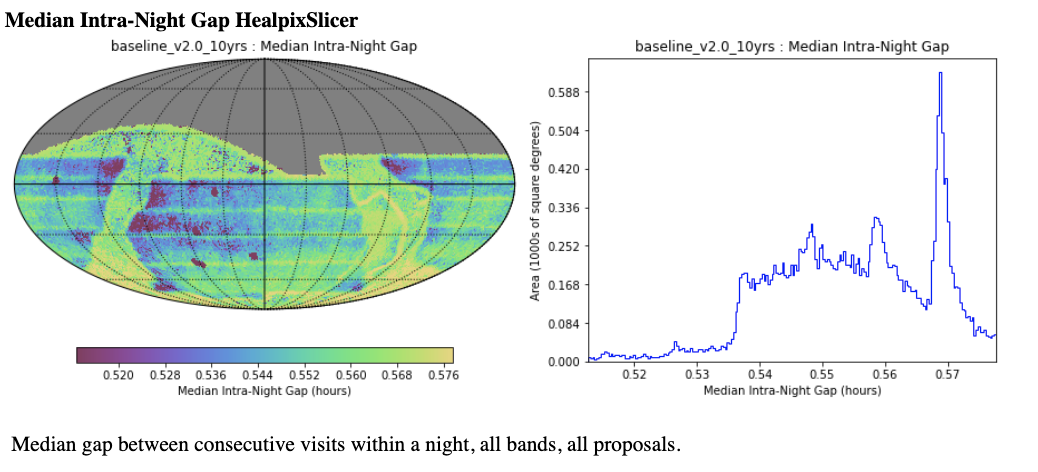
0.576
0.52
intranight gap
hours
15
internight gap
days
15
3
median internight gap
days
50
5
median internight gap
days
any filter
r band
current survey specifications
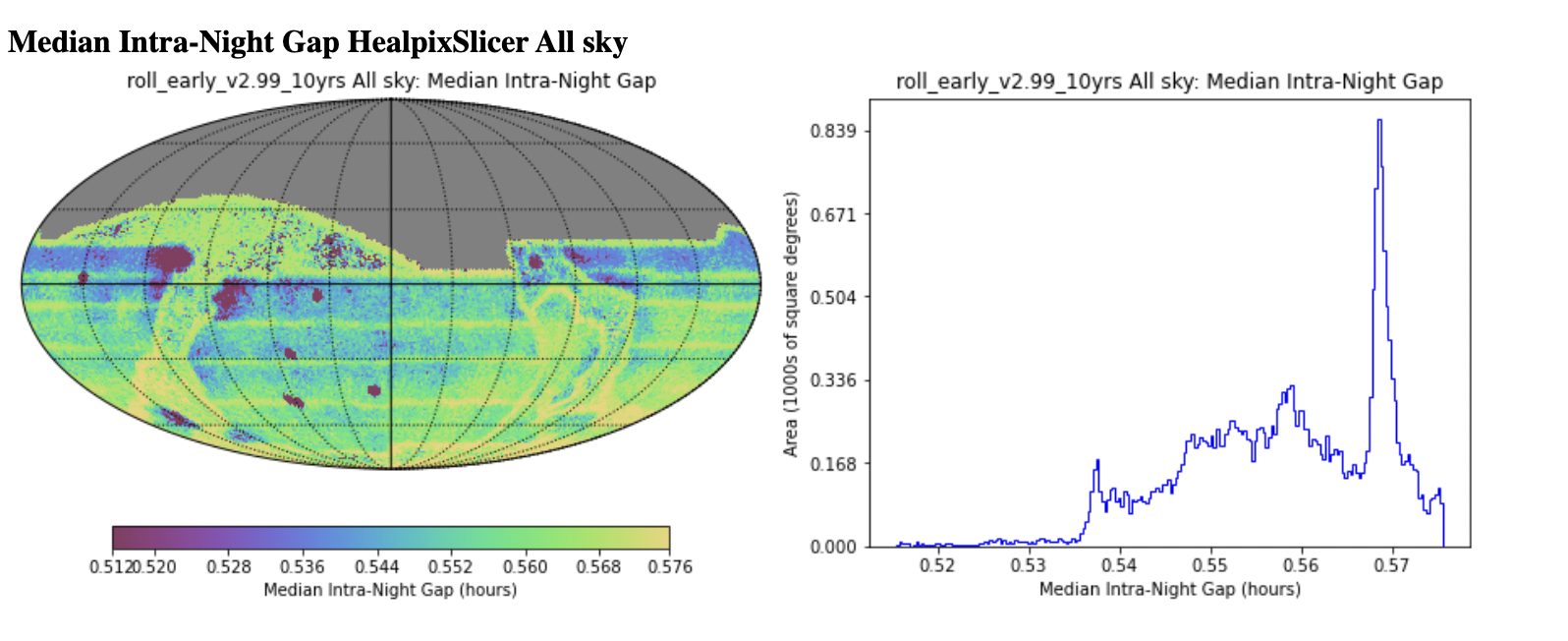

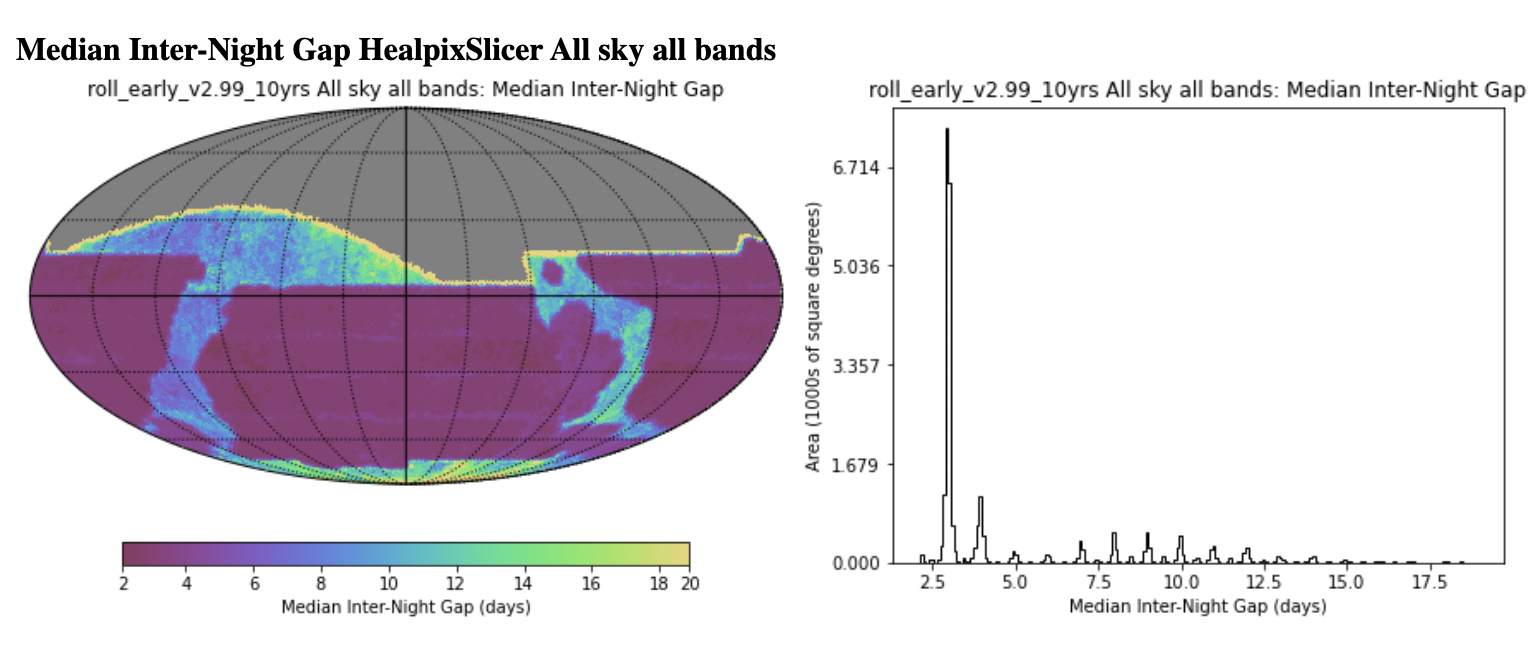


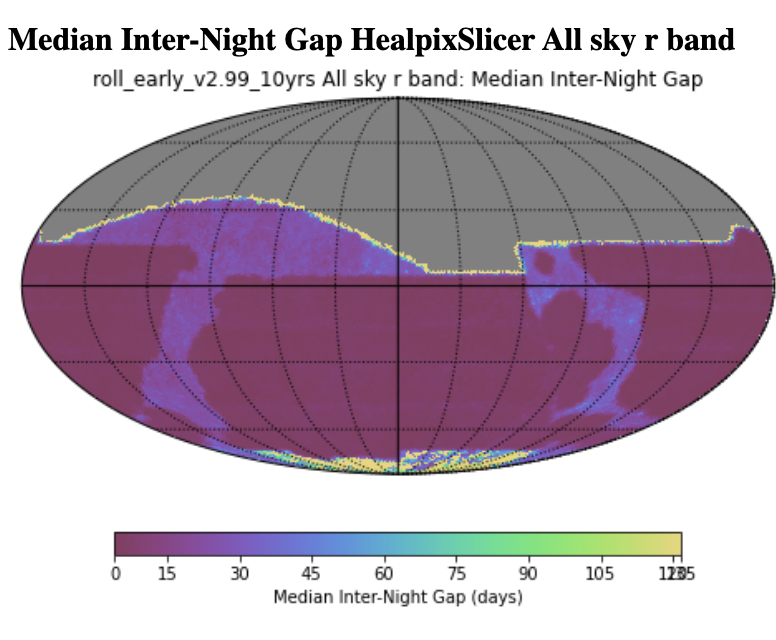

26.9
28.1
coadd 5σ depth
survey specifications
(current baseline)
source http://astro-lsst-01.astro.washington.edu:8080/?runId=2

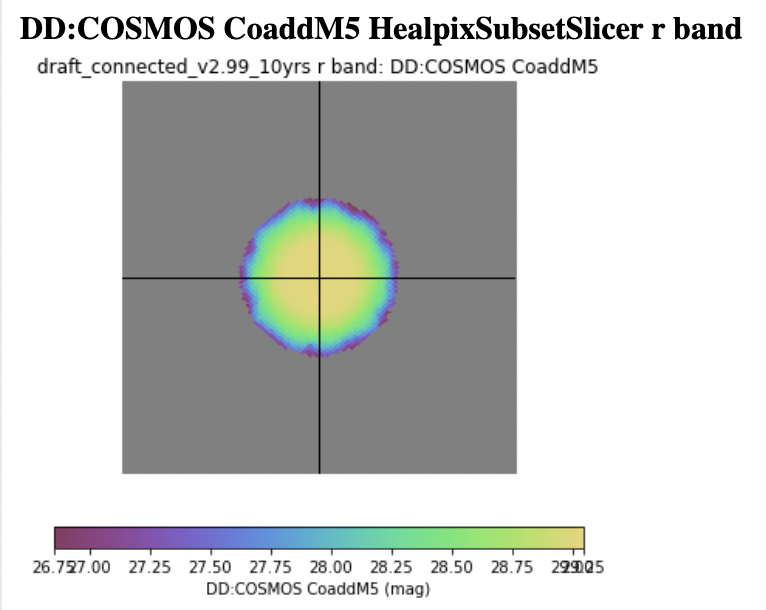
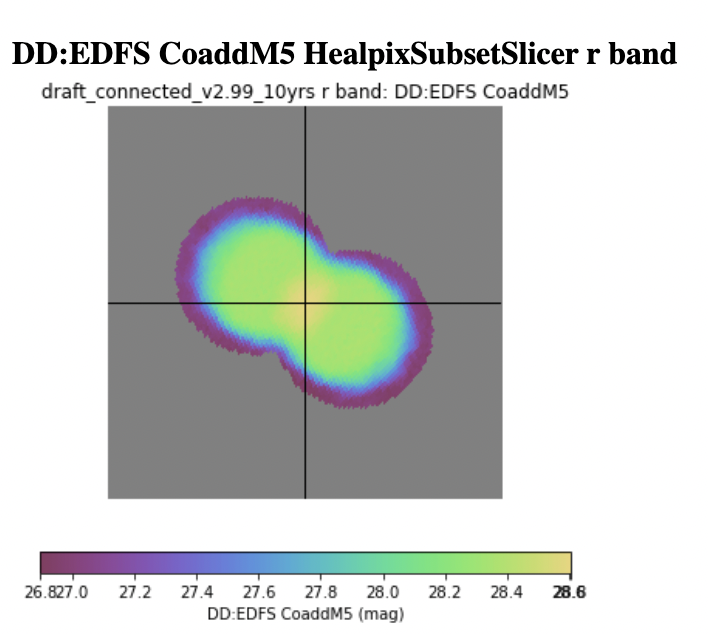
26.8
29.05
28.6
26.8
survey specifications
(current baseline)



26.8
29.05
28.6
26.8
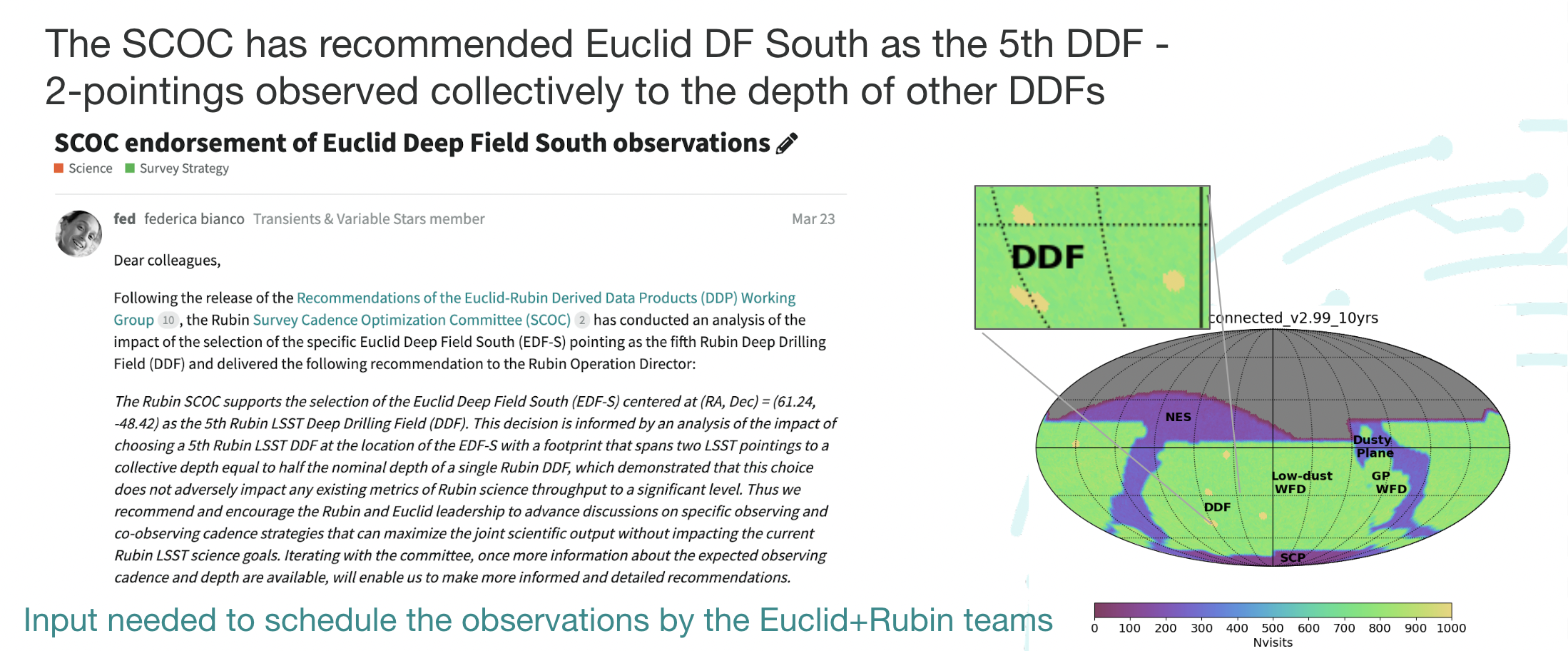

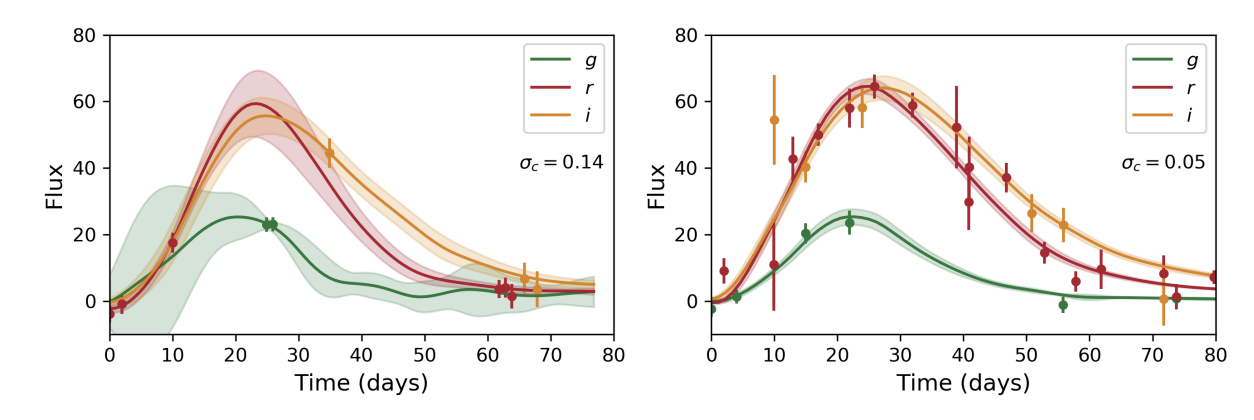
Lochner et al 2018
Pies in the LSST sky
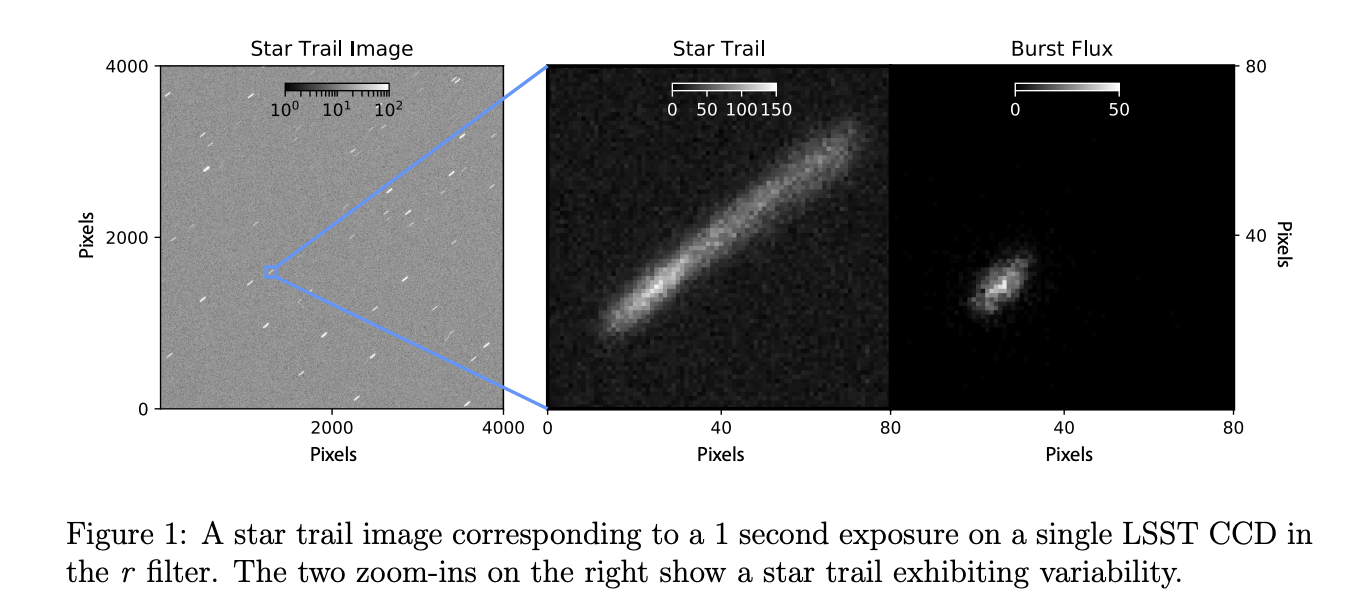



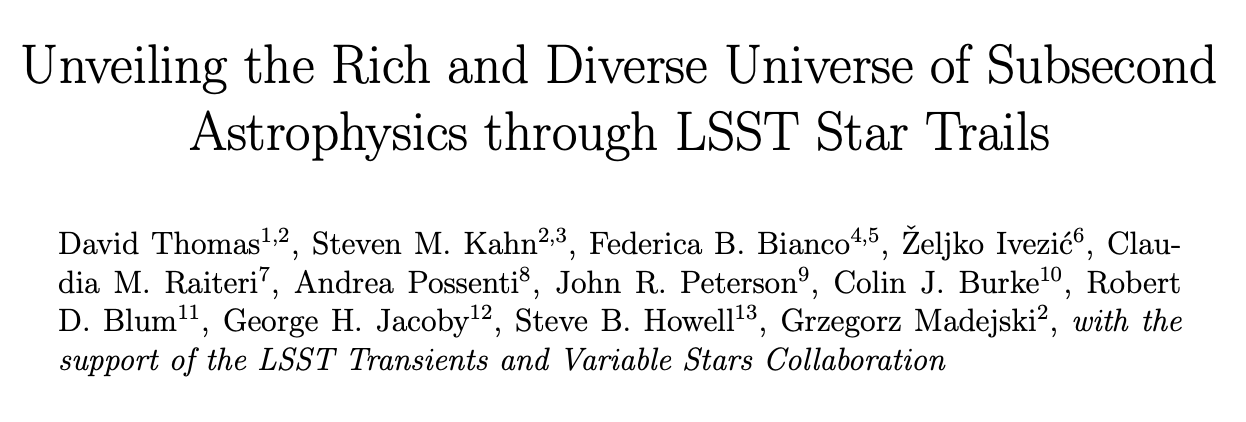
2018 Cadence White Paper

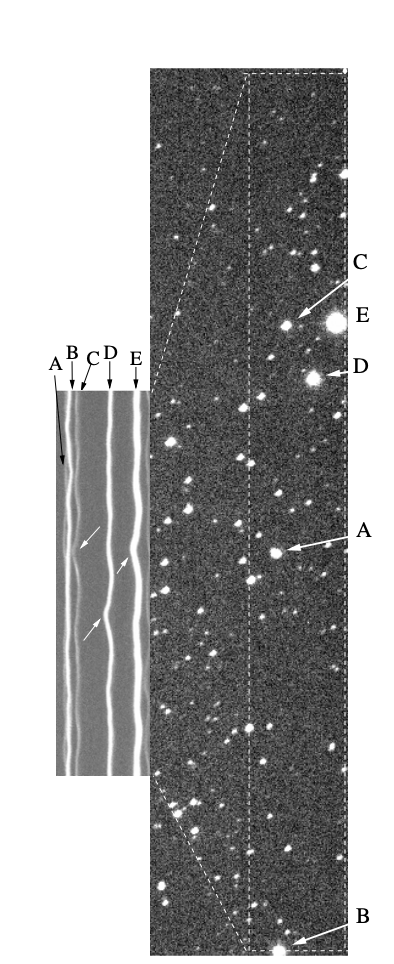





cepheid
The violent and rapidly varying radiation from black holes, neutron stars, and white dwarfs makes them promising targets for high time resolution imaging.
The rotation, pulsation, and local accretion dynamics of these compact stellar remnants tends to occur on timescales ranging from seconds to milliseconds. Their extreme densities also makes them an excellent testing ground for nuclear, quantum, and gravitational physics.
Thomas and Kahn, 2018
Additional targets
- cataclysmic variable stars,
- X-ray binary stars,
- flare stars,
- blazars
- Fast Radio Bursts
- technosignatures
federica bianco - fbianco@udel.edu

@fedhere
Time
Domain
Science
Static
Science
federica bianco - fbianco@udel.edu

@fedhere
Time
Domain
Science
Static
Science
federica bianco - fbianco@udel.edu

@fedhere
Time
Domain
Science
Static
Science
Alerts based
Catalog based
Deep stack
based
Deep stack
based
federica bianco - fbianco@udel.edu

@fedhere
Time
Domain
Science
Static
Science
Alerts based
Catalog based
Deep stack
based
Time
Domain
Science
Static
Science

AGN

STRONG
LENSING
50M+ AGNs to z~7.5
variability, microlensing, binaries
cosmography from Lens Time Delays
calibration of cluster mass function with with S+W Lensing
resolved high z galaxy properties
from rare to statistical samples
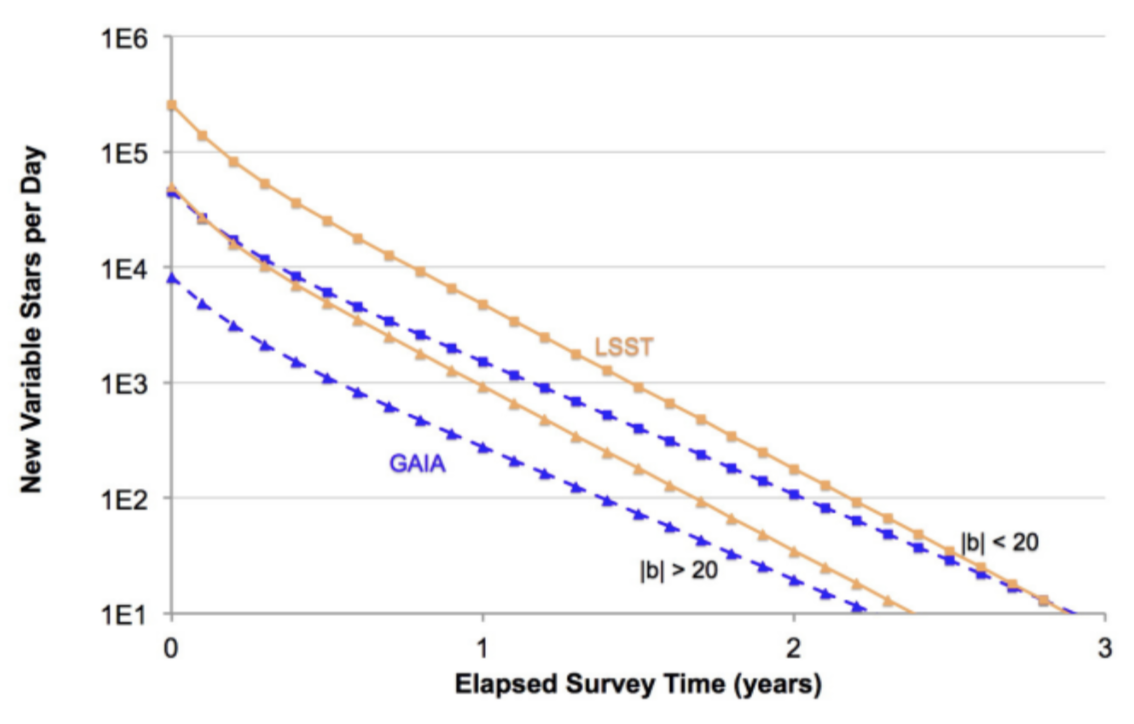
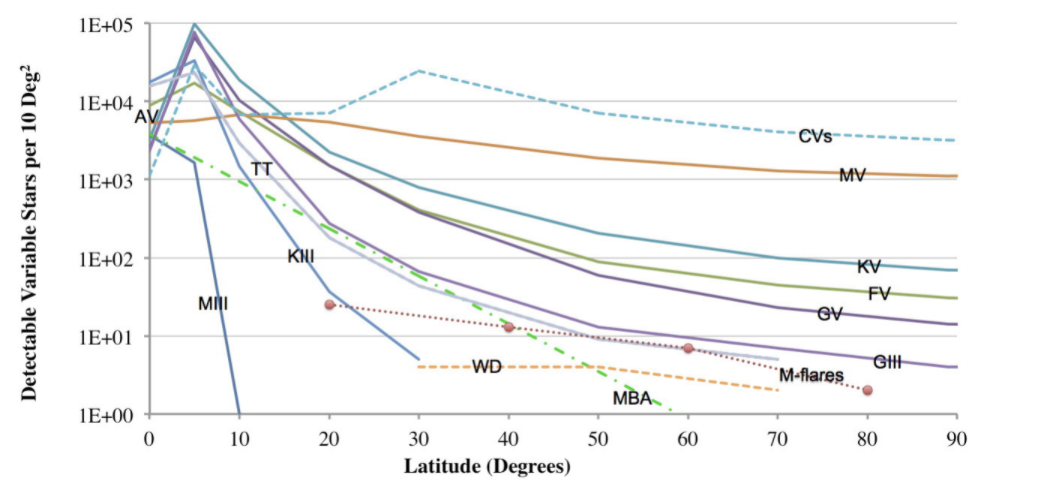
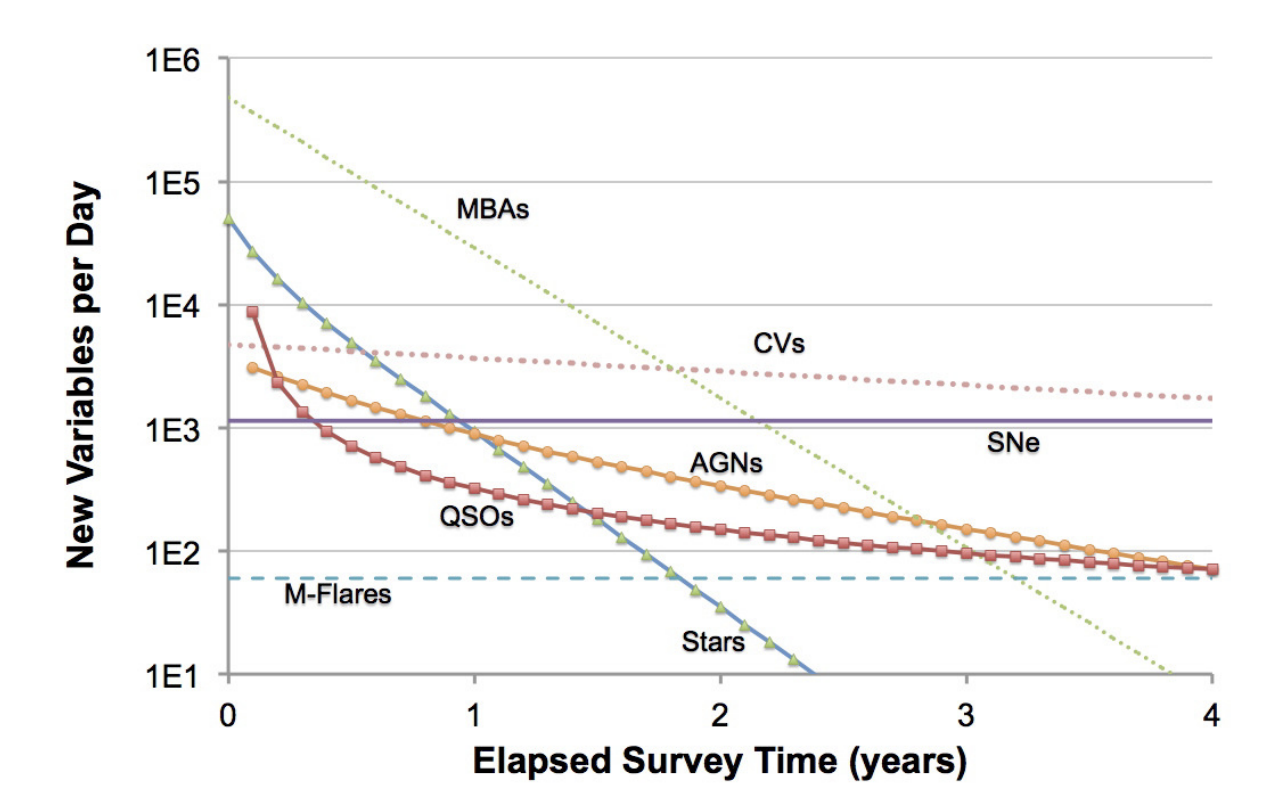
What's in a datapoint?
Kaczmarczik et al 2009
What can we learn from 1 data point?
Because LSST will have exquisite image quality we may be able to measure color from atmospheric diffraction
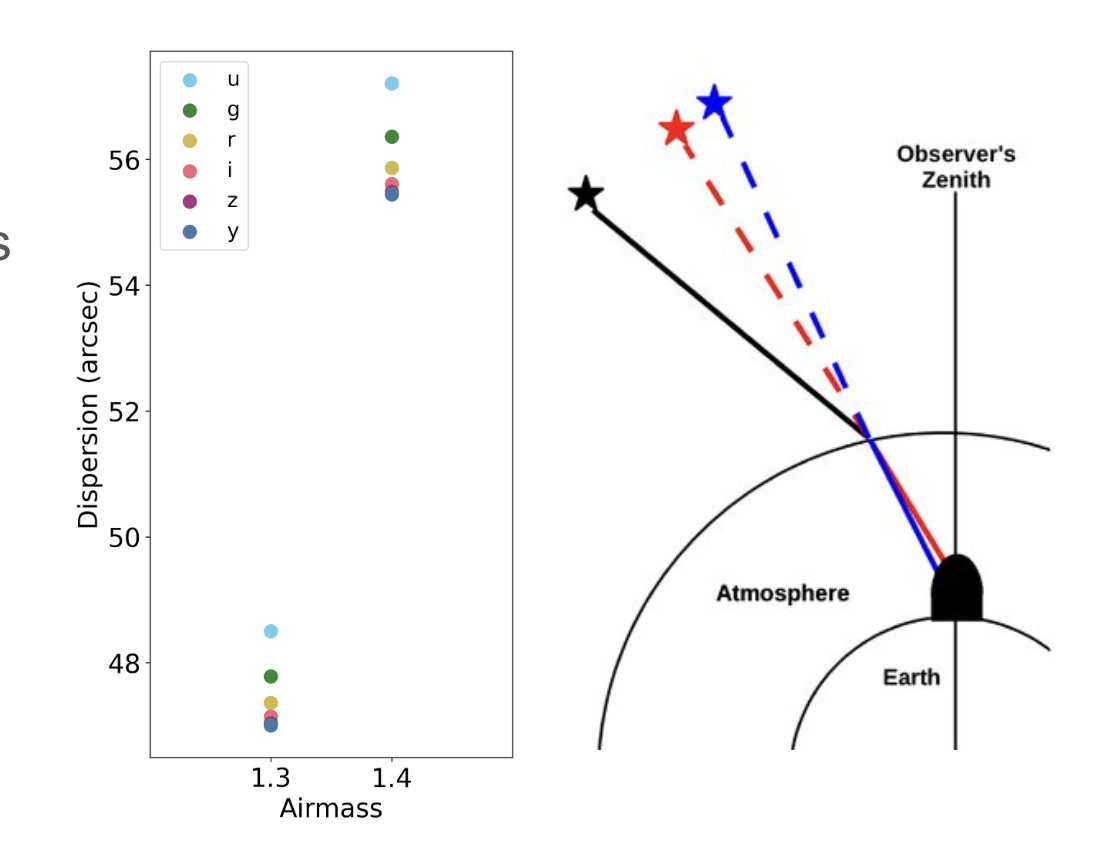
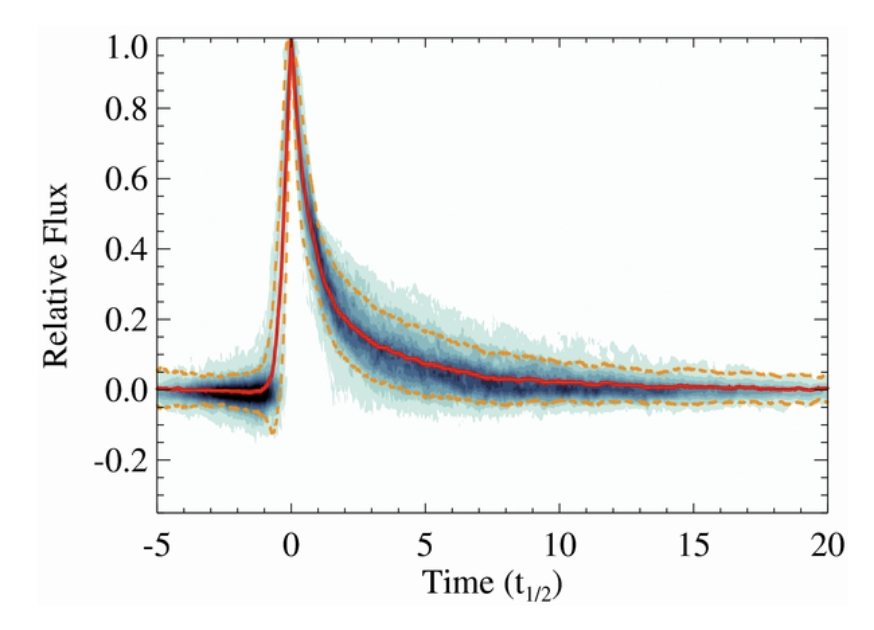
Davenport et al. 2014
~2h
Differential Chromatic Refraction
atmosphere-aided transient studies with LSST
Riley Clarke, Davenport, Gizis, Bianco, in prep
dM Flare energy
dDCR color Flare temperature
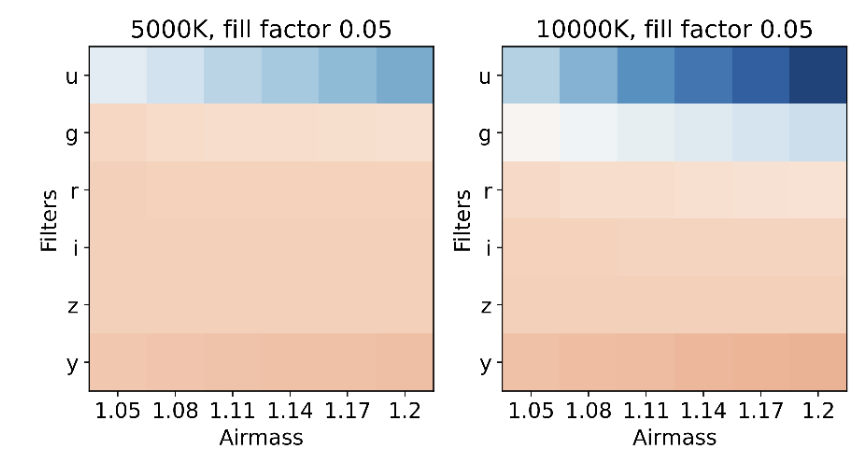


Micro- and meso-lensing for stellar physics
- detect microlensing events where both the lens and source lie in the Magellanic Clouds, and explore stellar and stellar remnant populations in another galaxy.
- LSST will investigate the mass distribution offaint objects in the local neighborhood, such as low mass dwarfs, stellar remnants, andfree-floating planets.
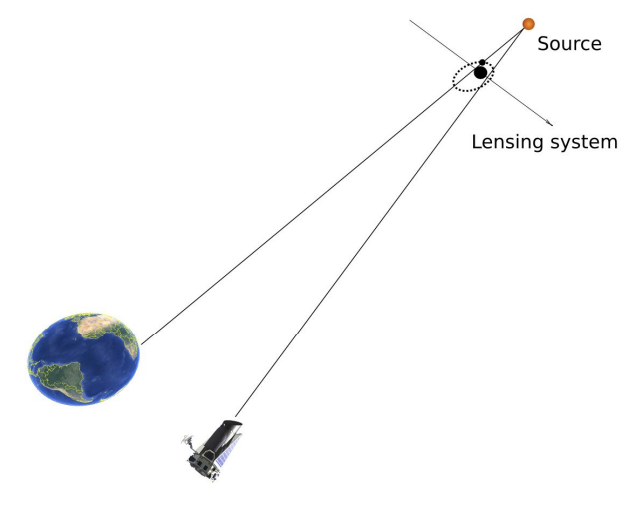
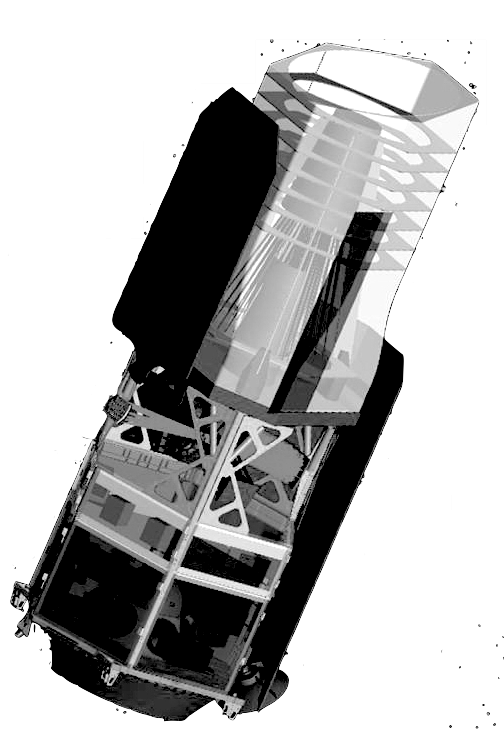

Survey coordination
Rubin + Roman
TVS Roadmap
Humbleton et al 2022
Will we discover new physics?
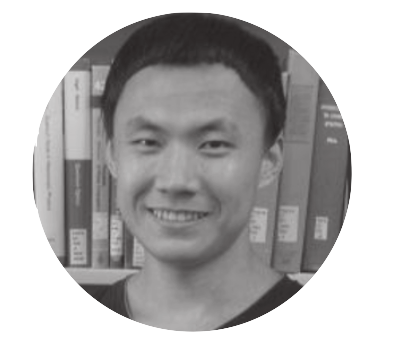

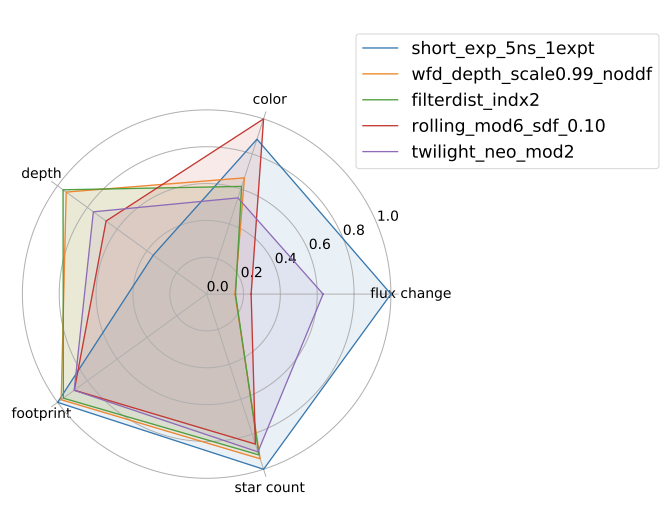
A comparative assessment of LSST potential surveys in the discovery of unknown unknowns
Research Inclusion: sonification of LSST lightcurves
Rubin Rhapsodies


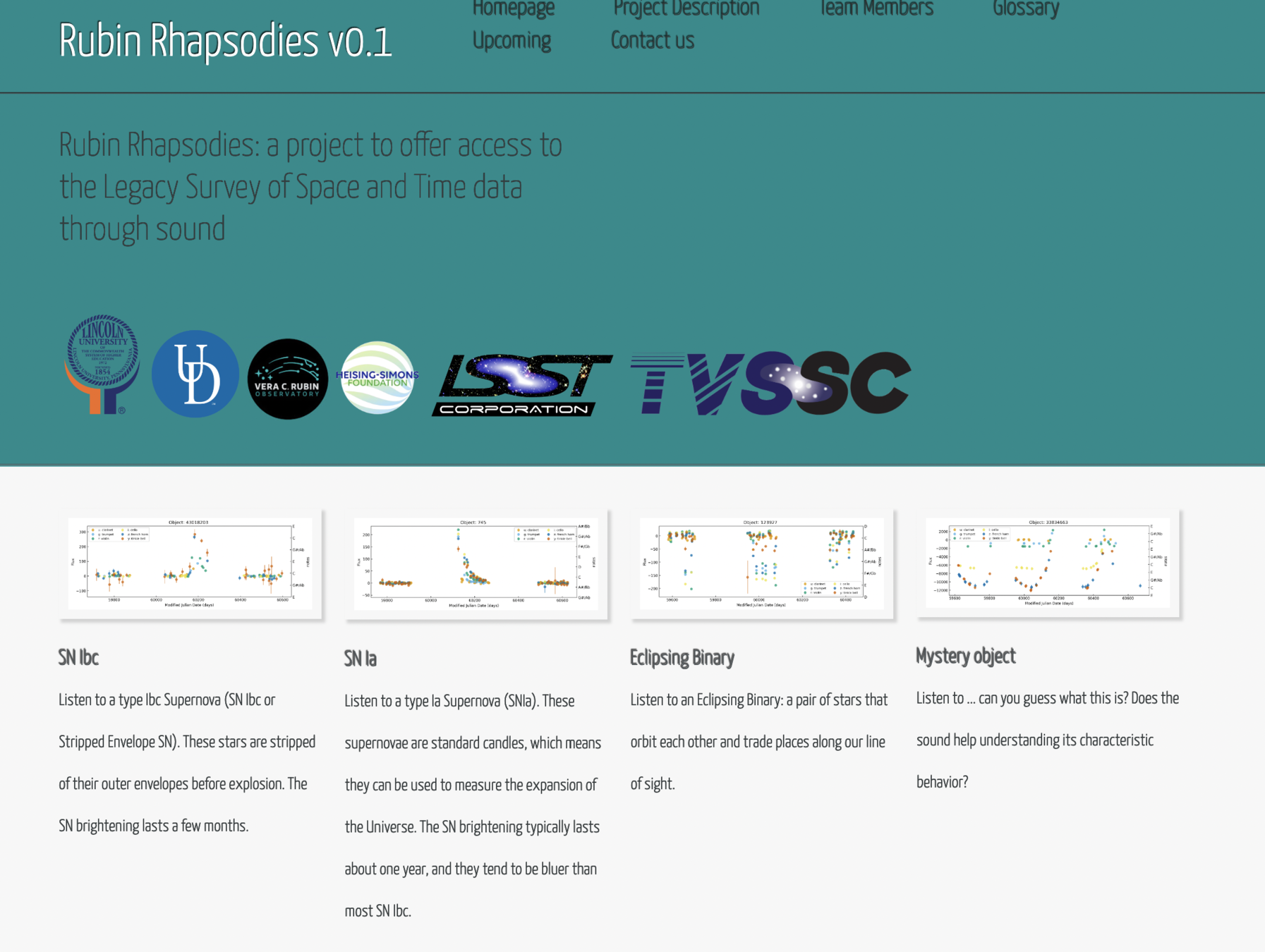
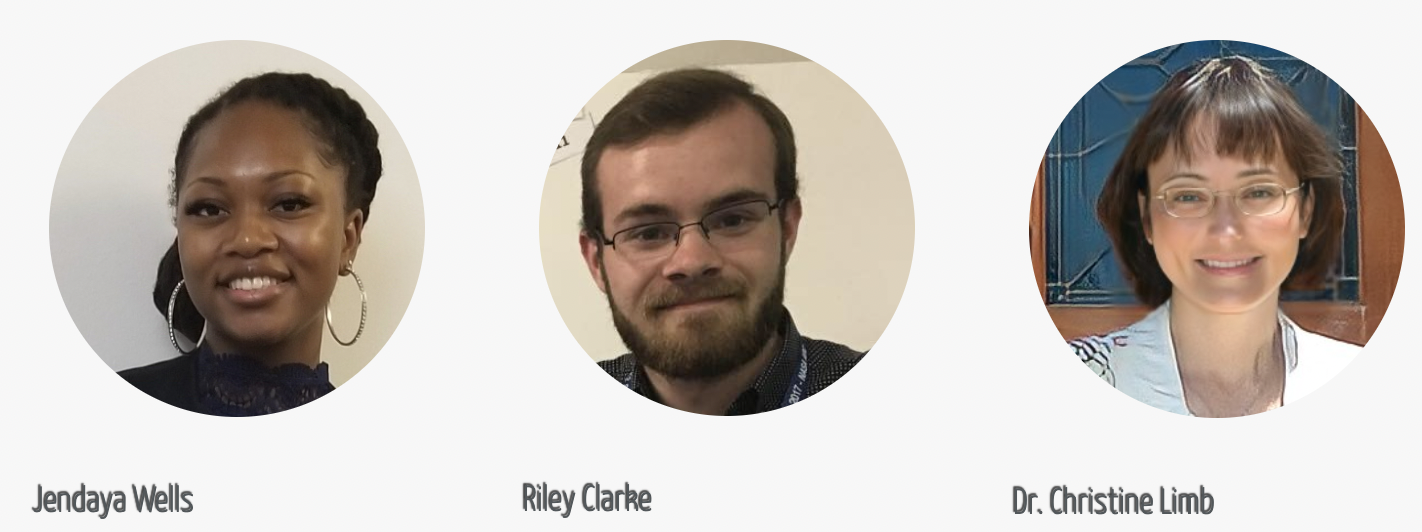

thank you!
University of Delaware
Department of Physics and Astronomy
Biden School of Public Policy and Administration
Data Science Institute

@fedhere
federica bianco
Rubin Observatory LSST
MMA and LEOsats
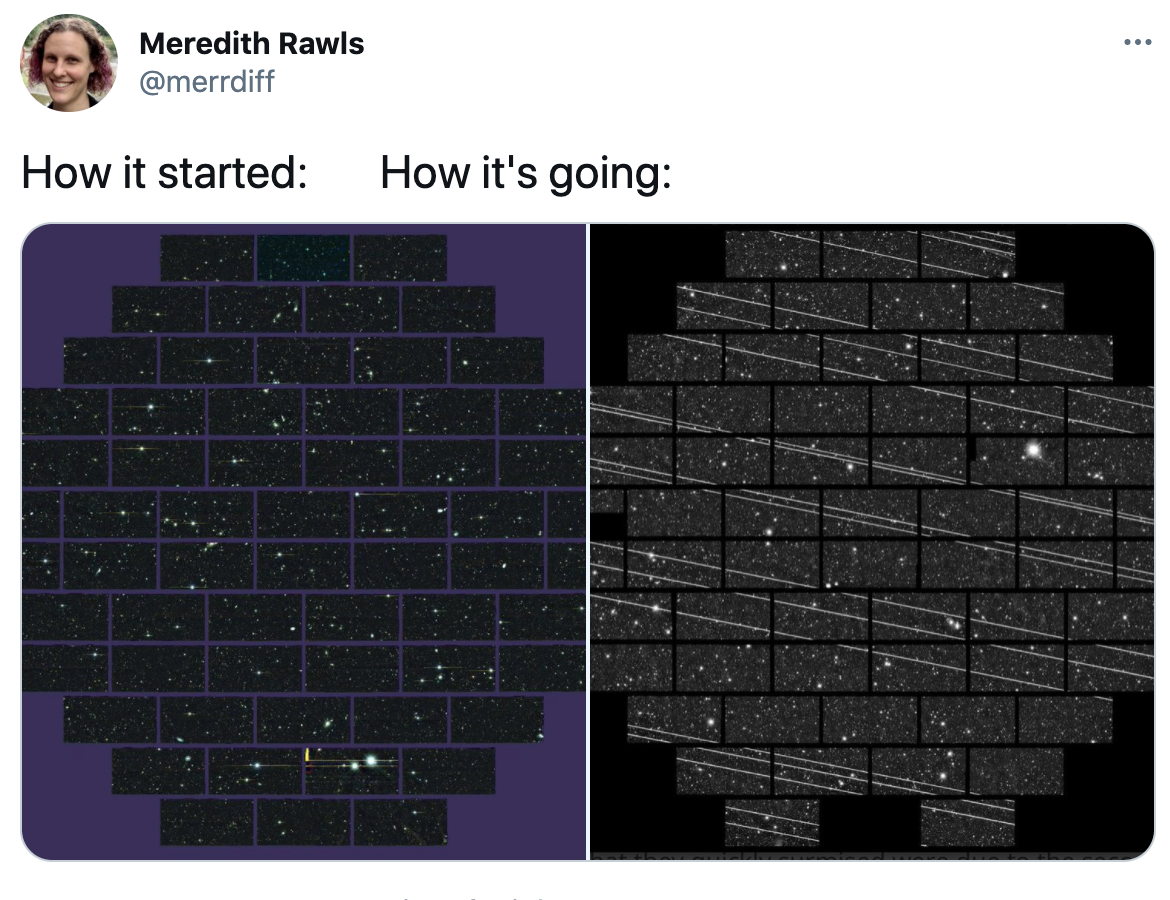

Iridium satellite number 35 lit up the predawn sky west of Boston at 5 a.m. EST on February 1, 1998, Sky & Telescope
Satellite flares
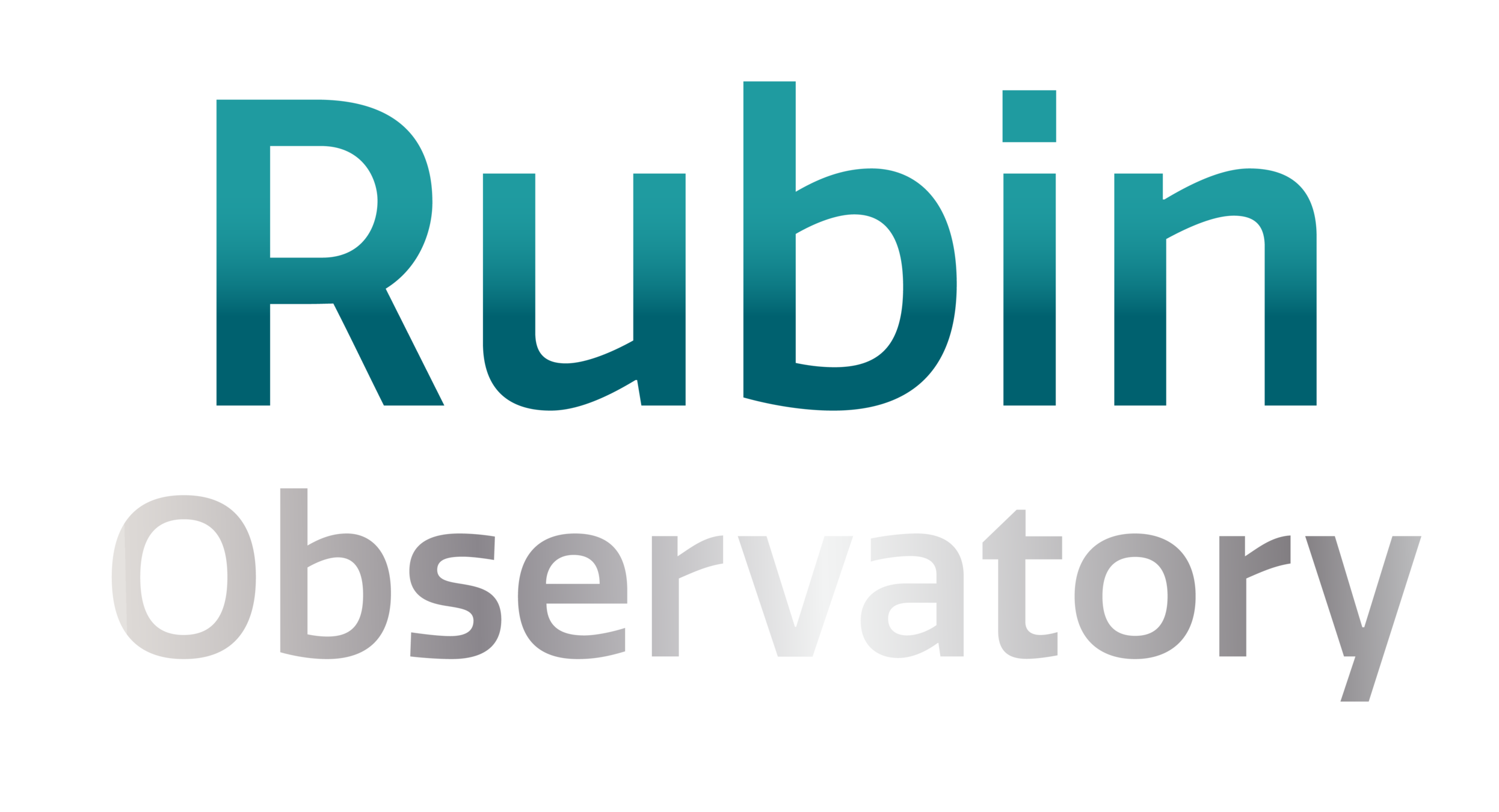



@fedhere
federica bianco fbianco@udel.edu
Time domain Rubin LSST science
can be mitigated:
- orientation of satellite,
- directing flares away from observer
- knowing coordinates to associate them to alerts
if not mitigate there would be bogus alerts and images ruined by saturating flares
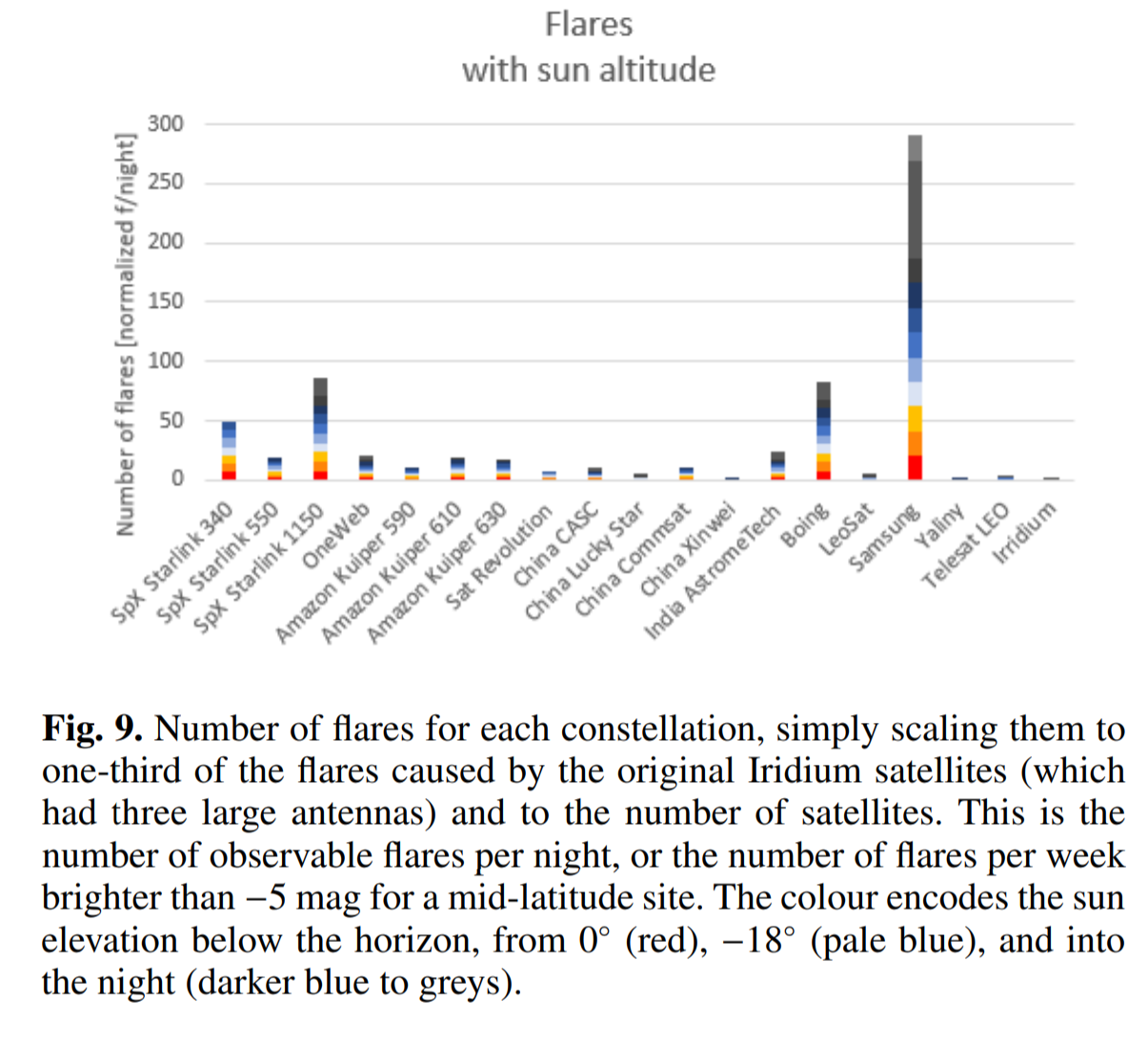
Science Collaborations
